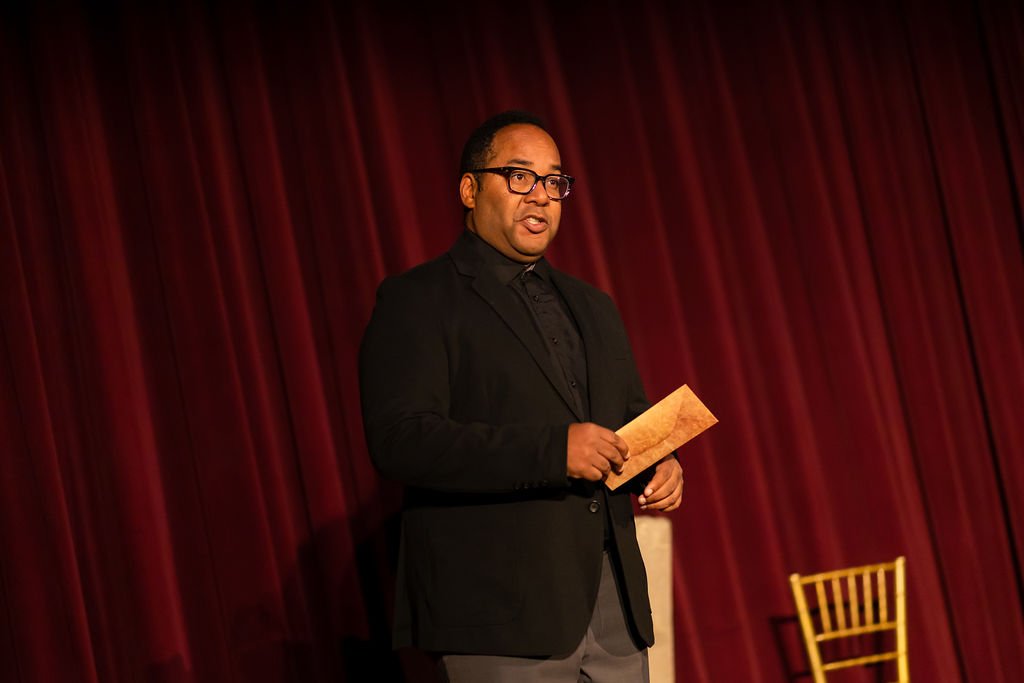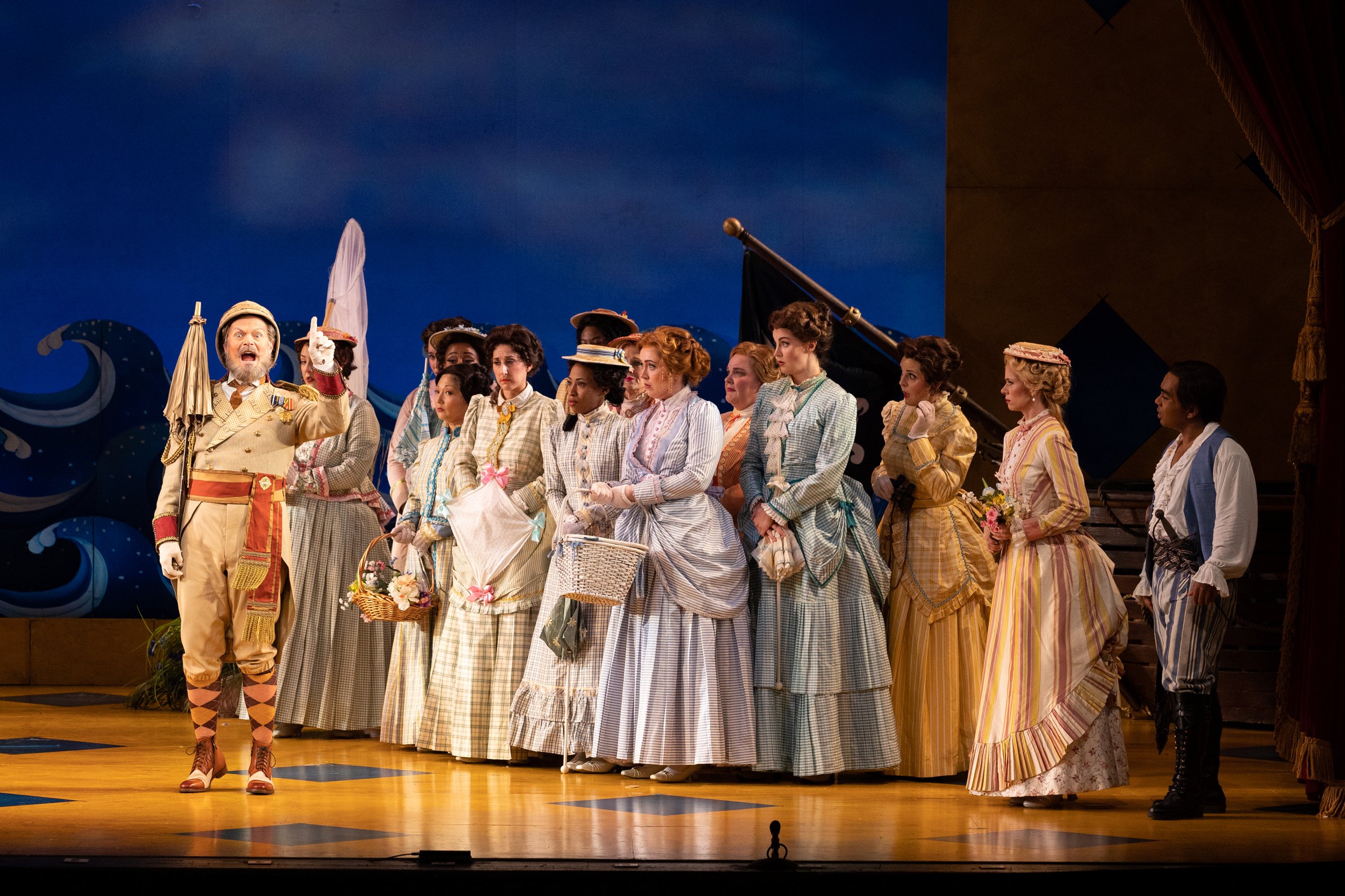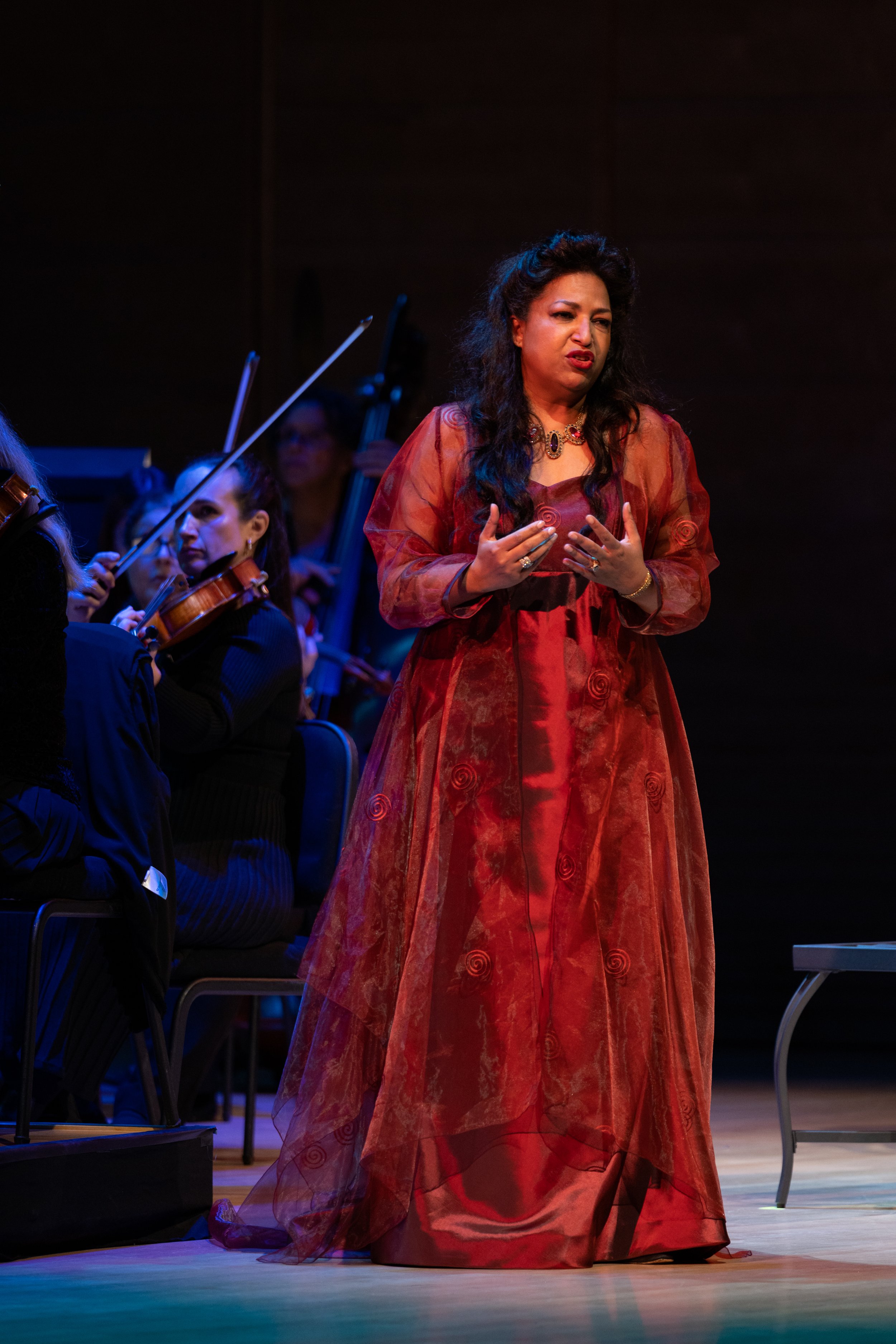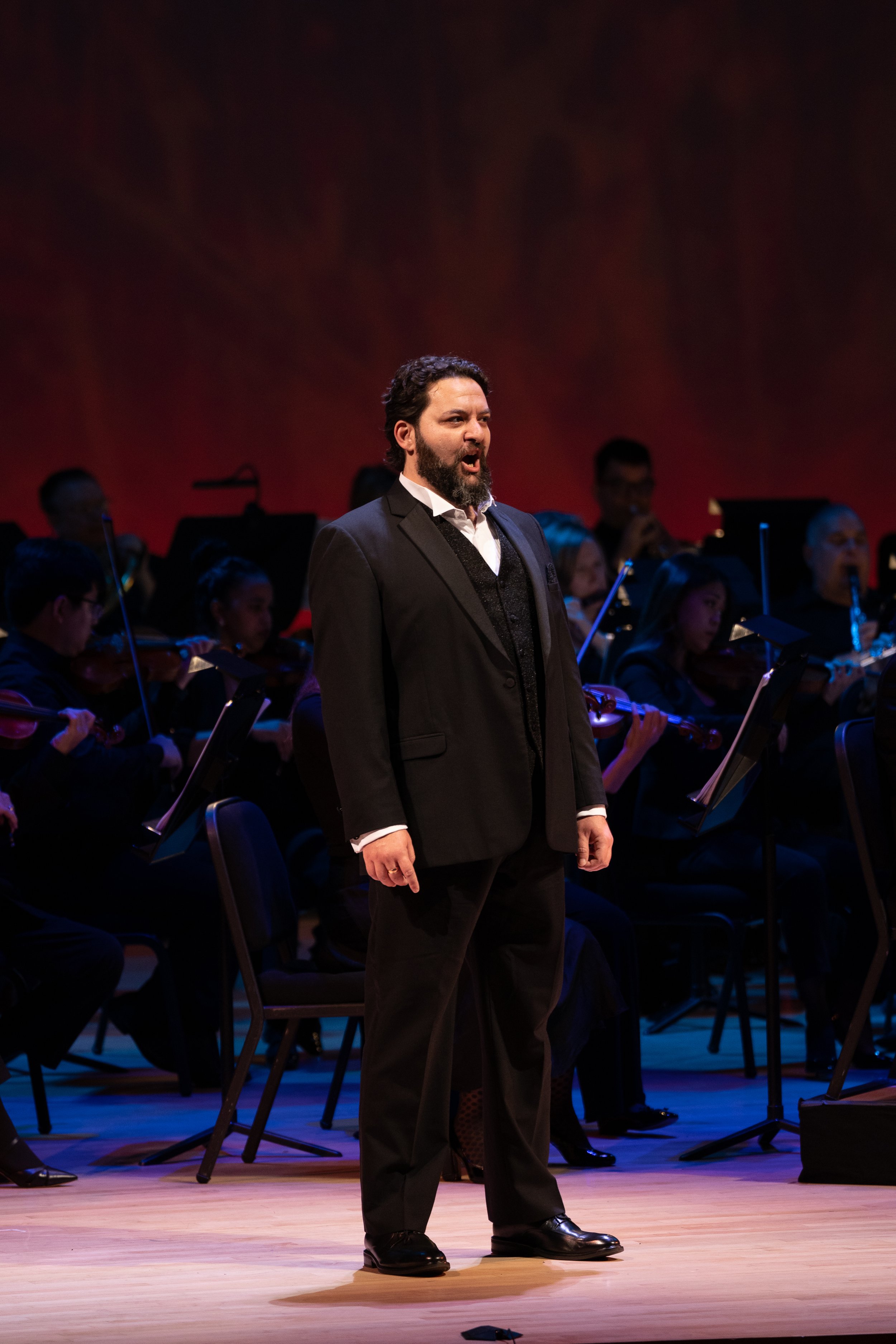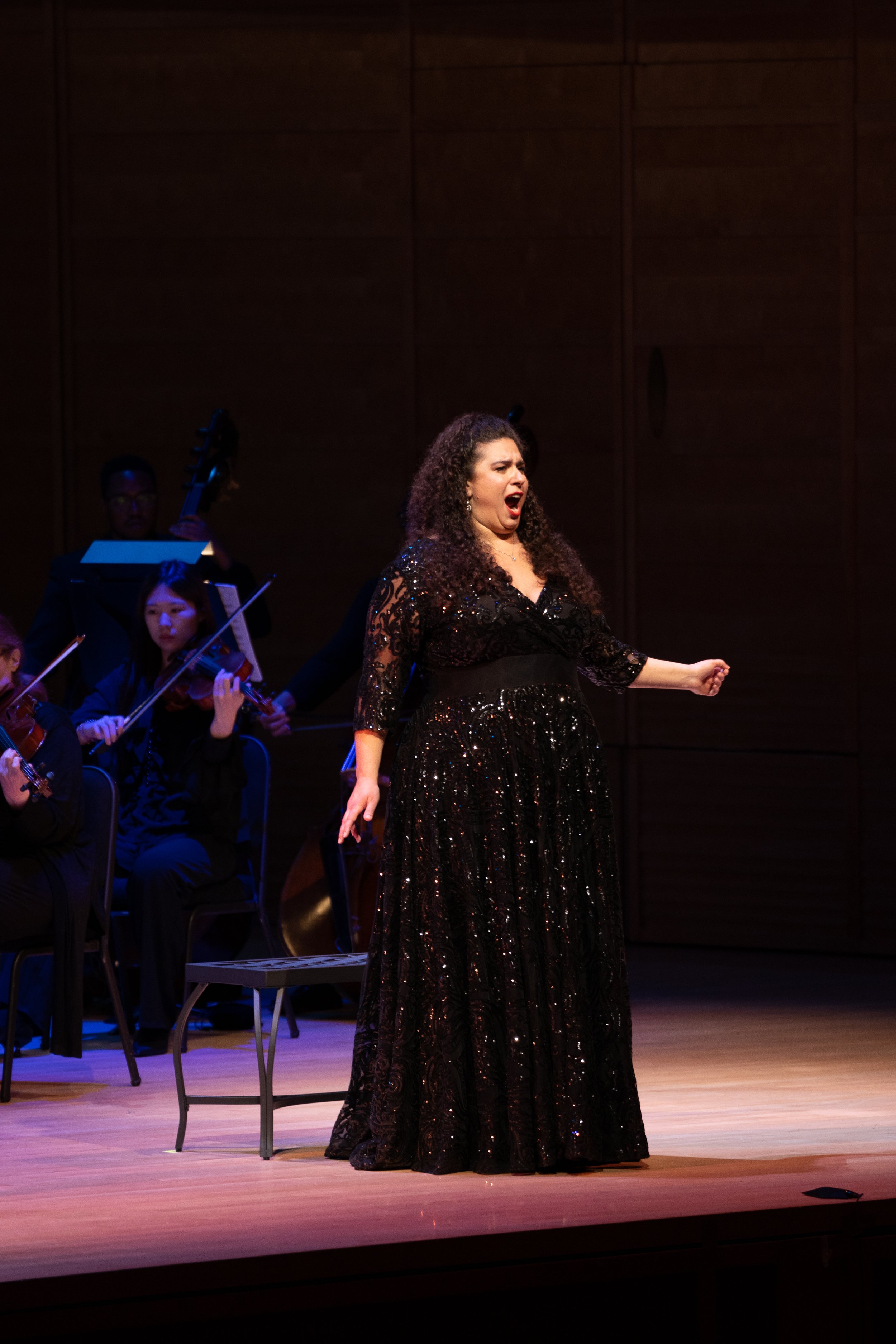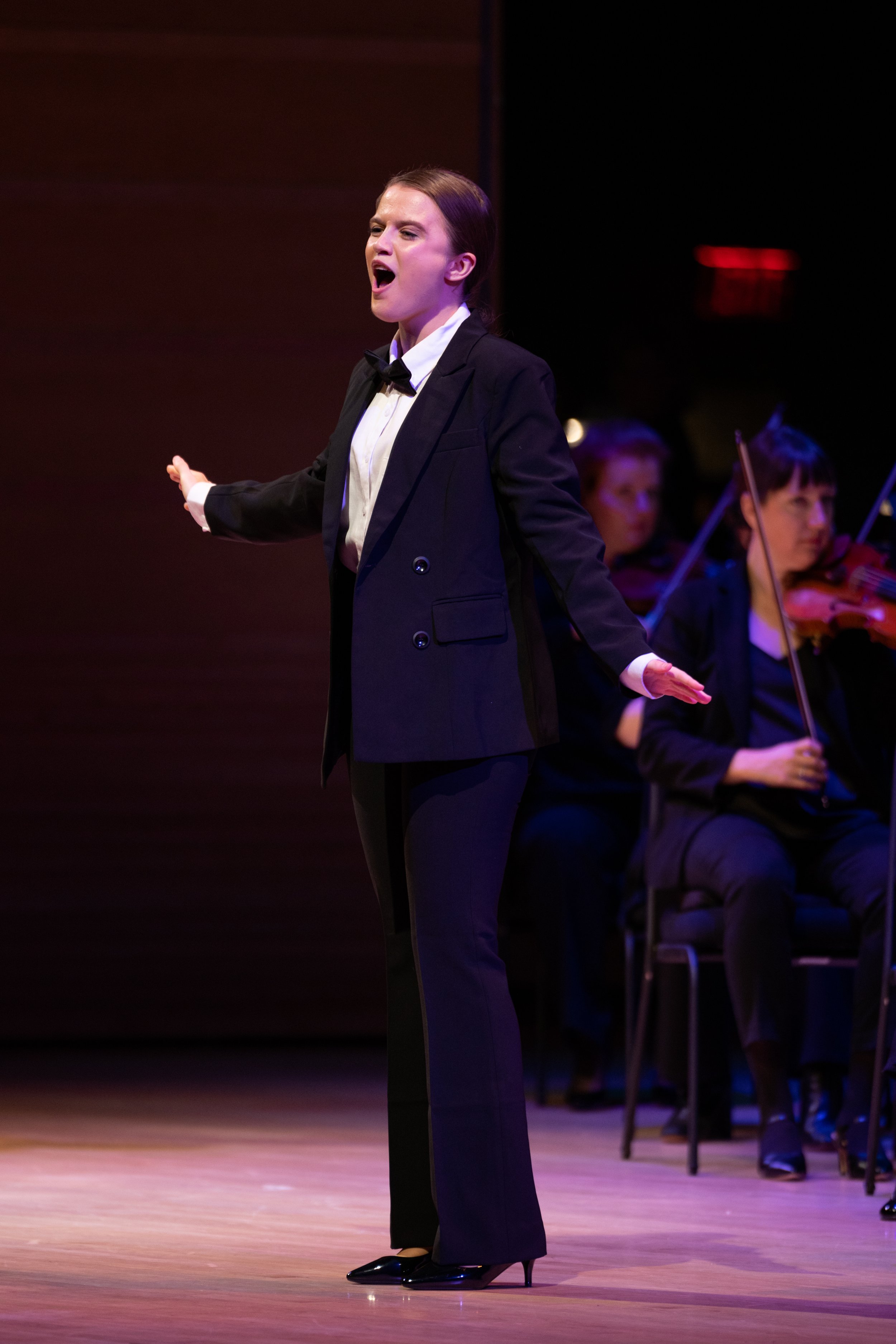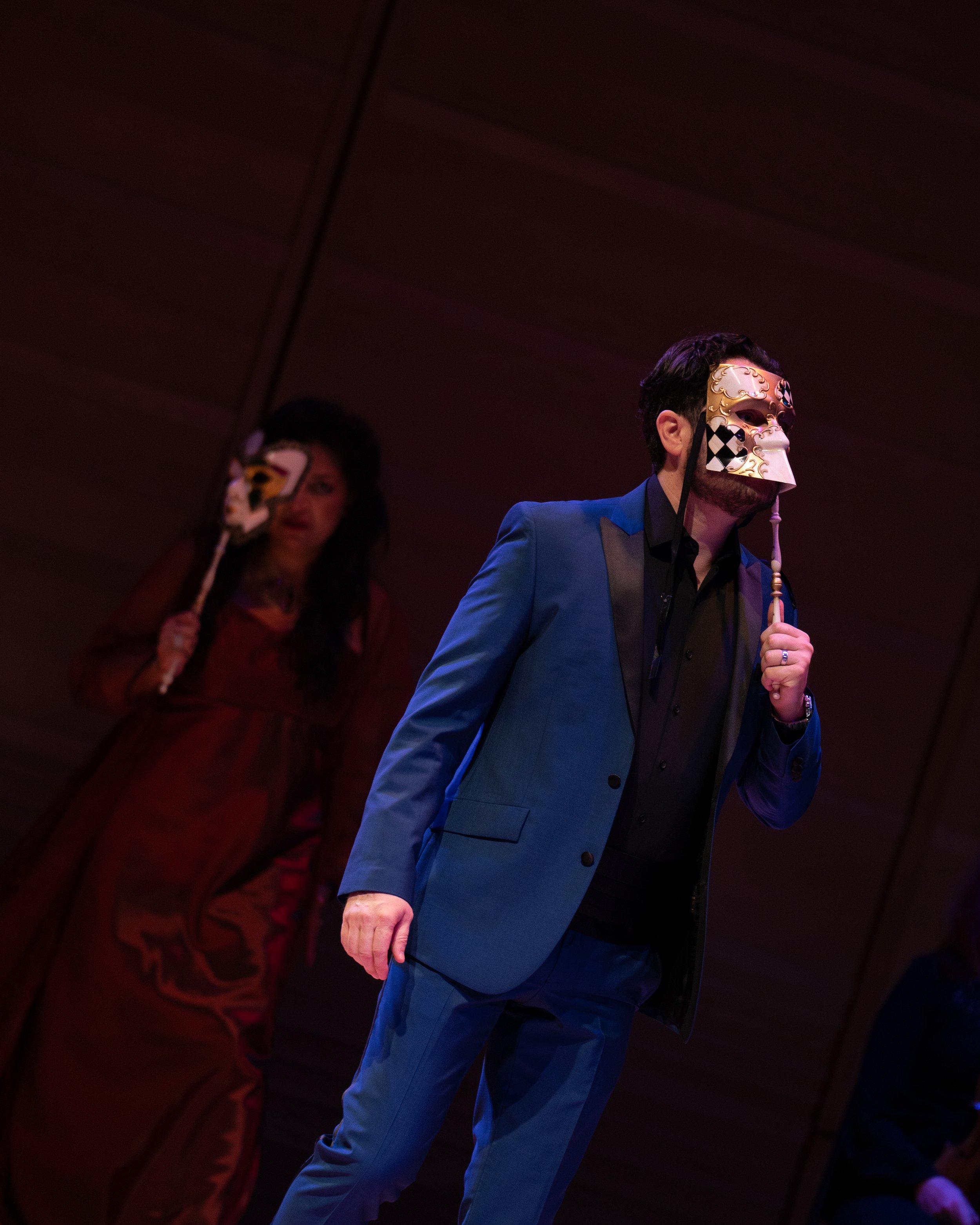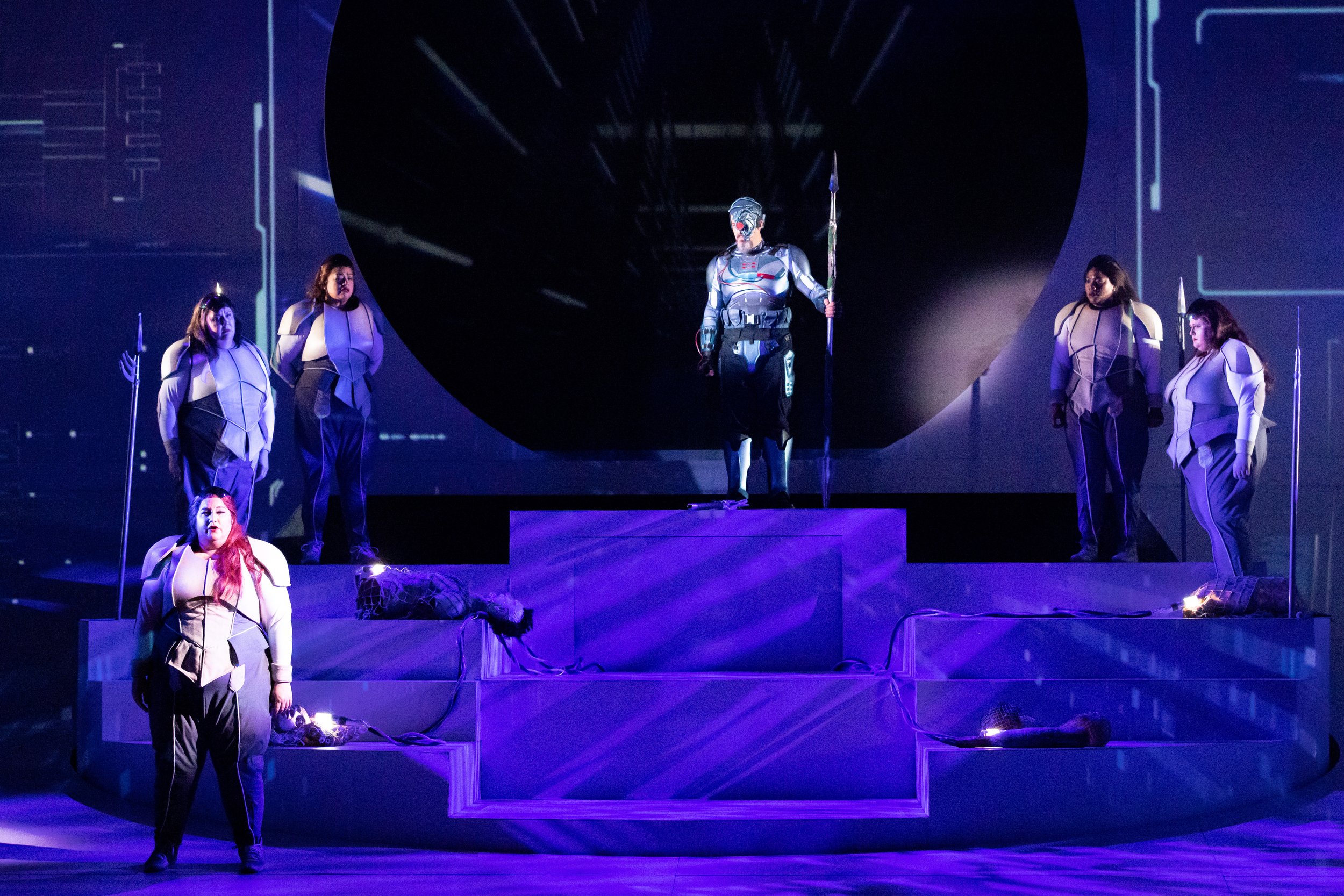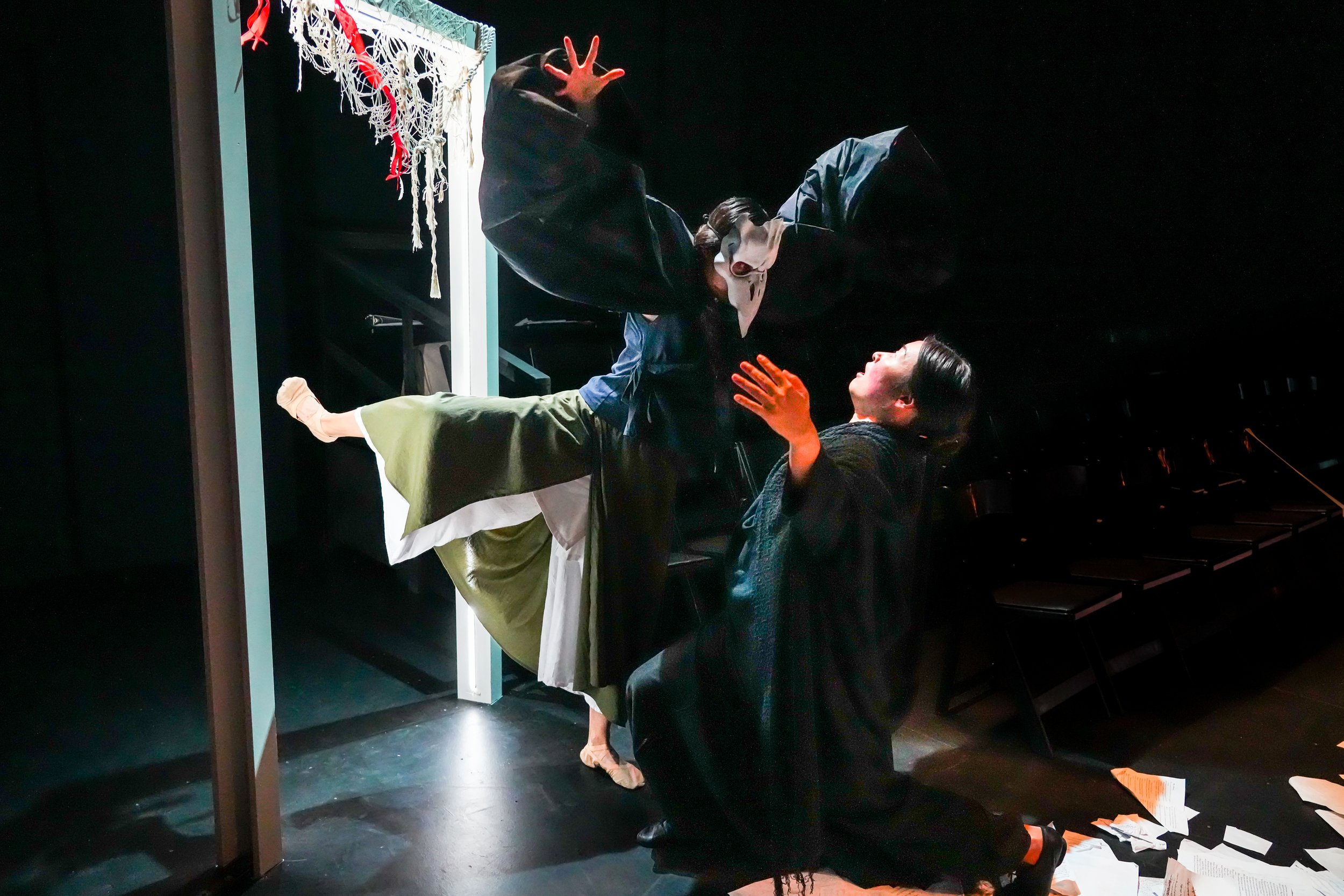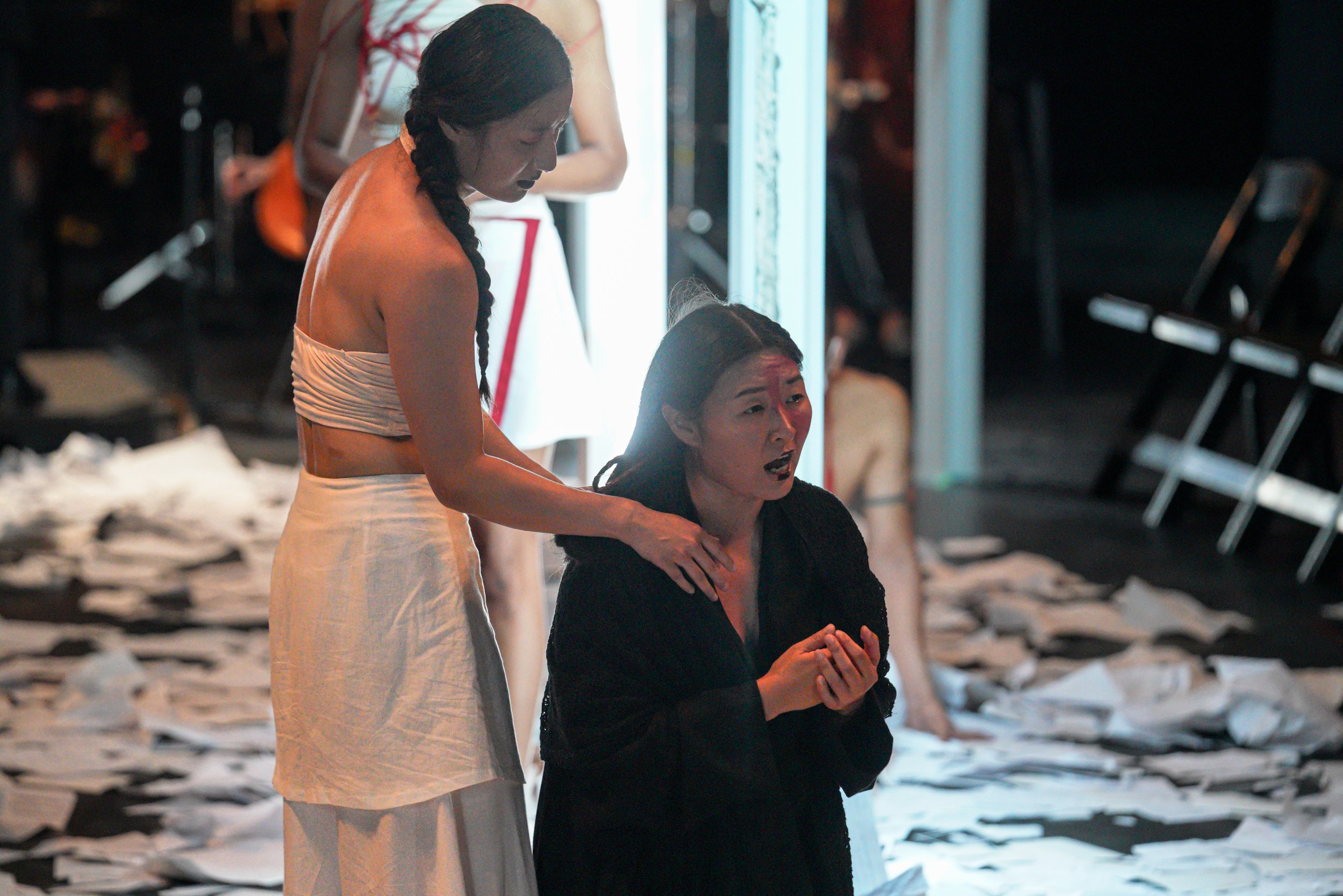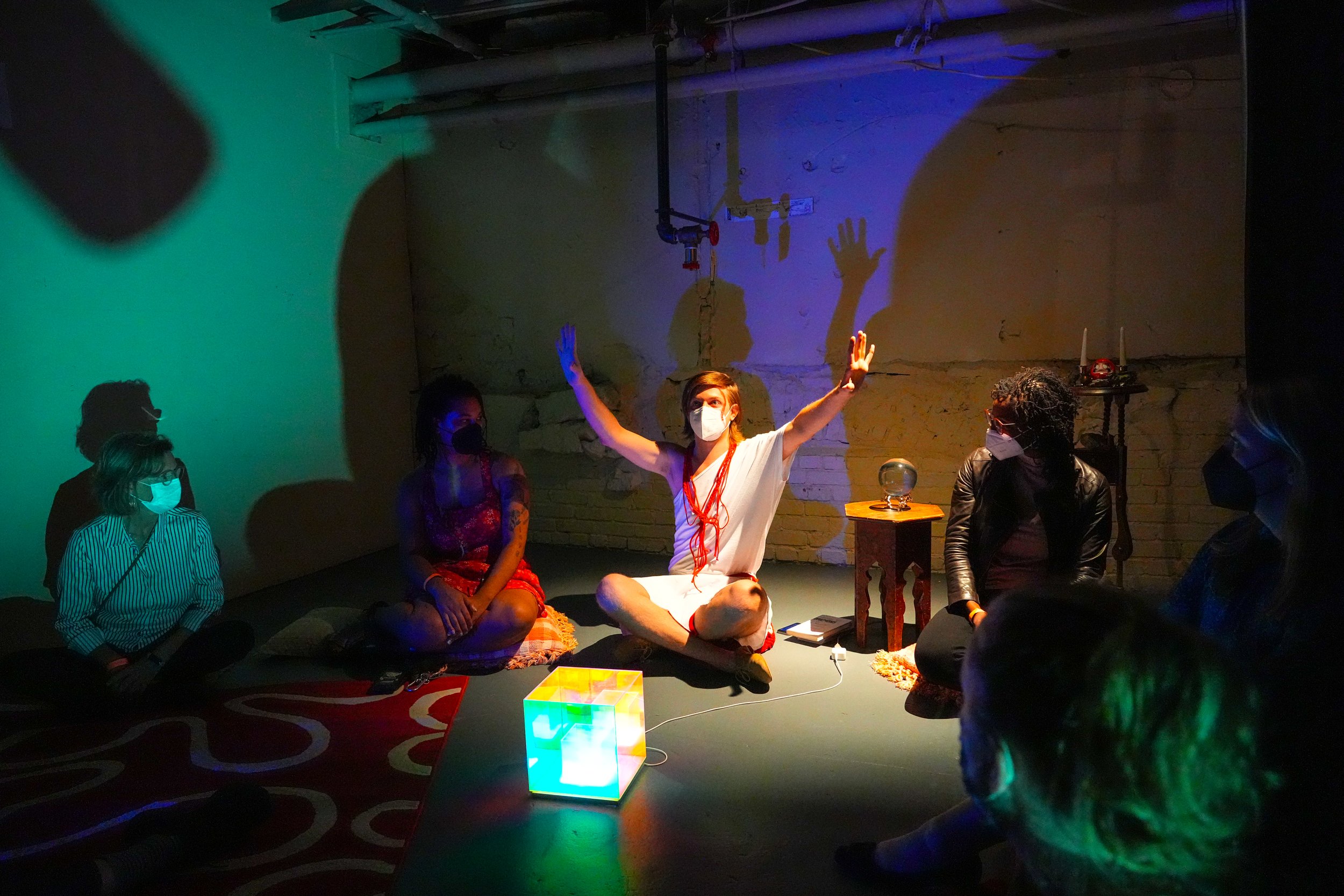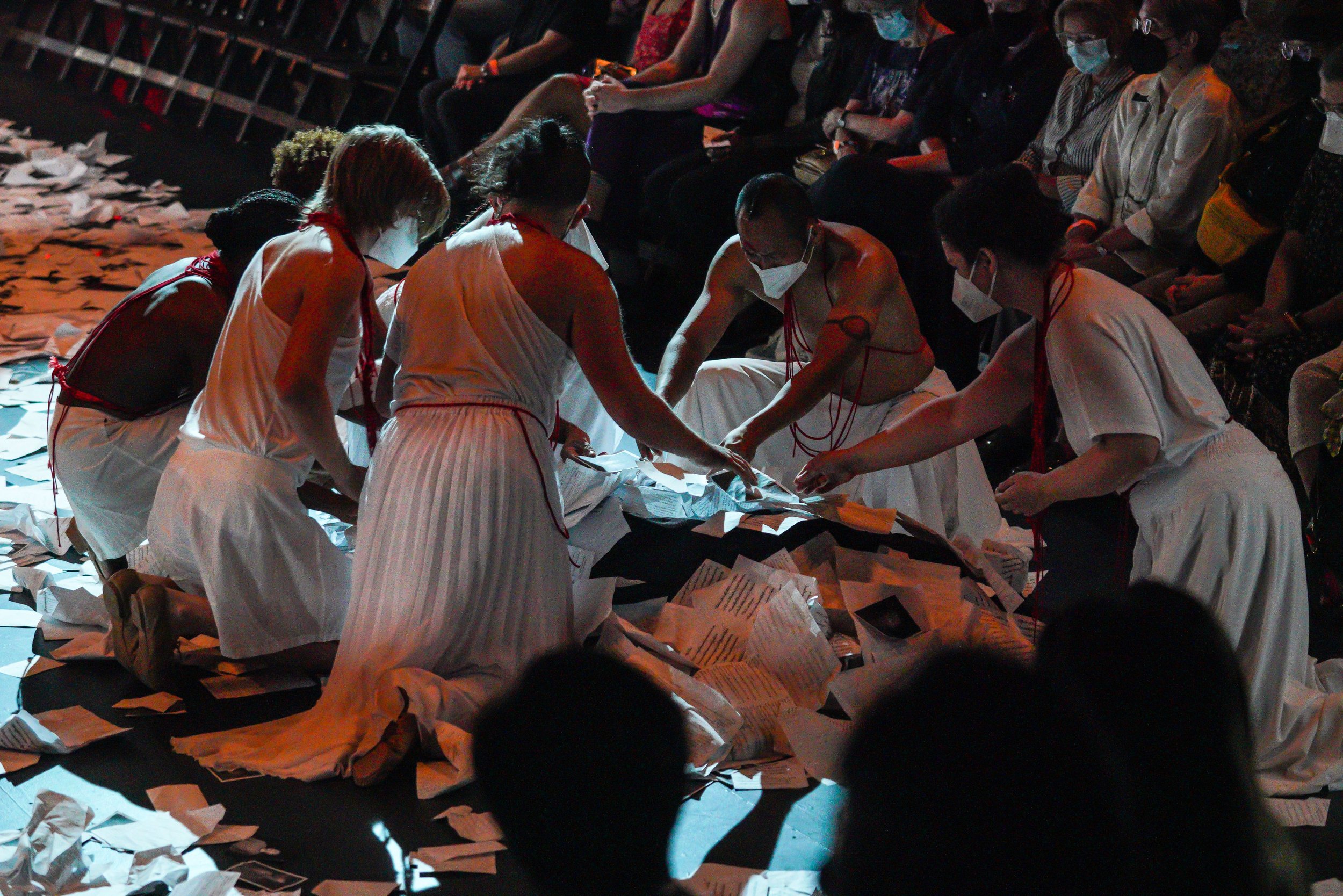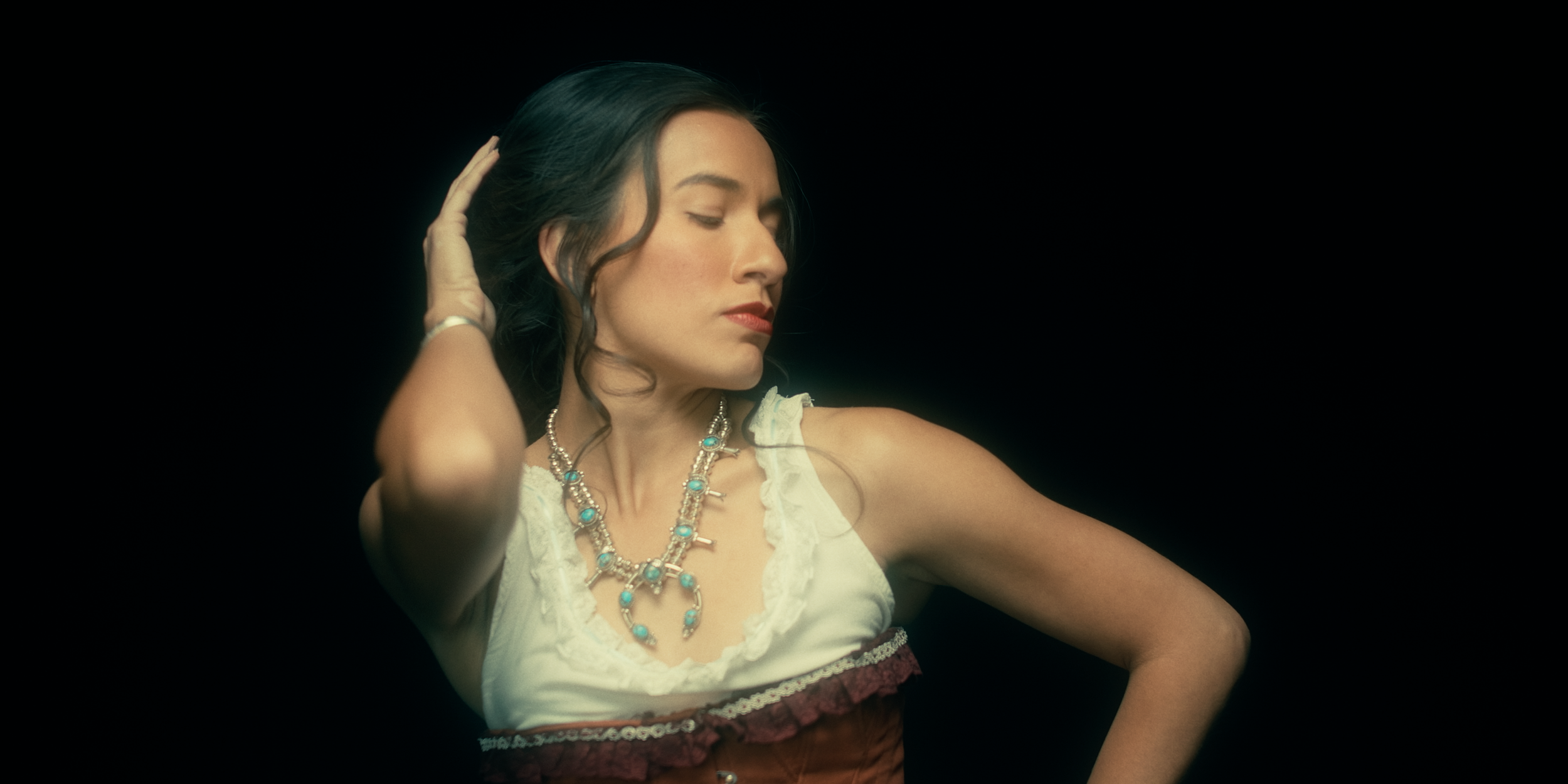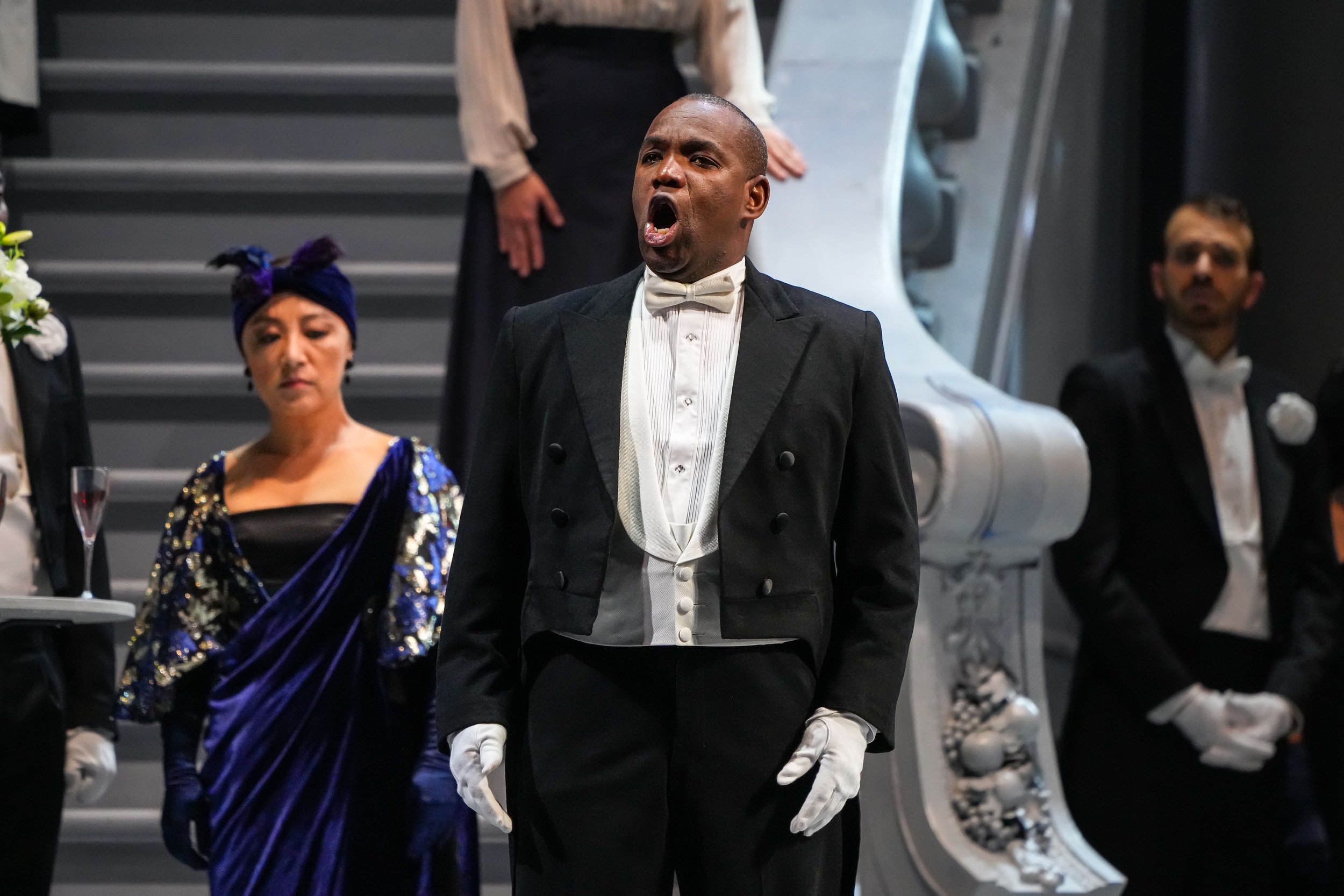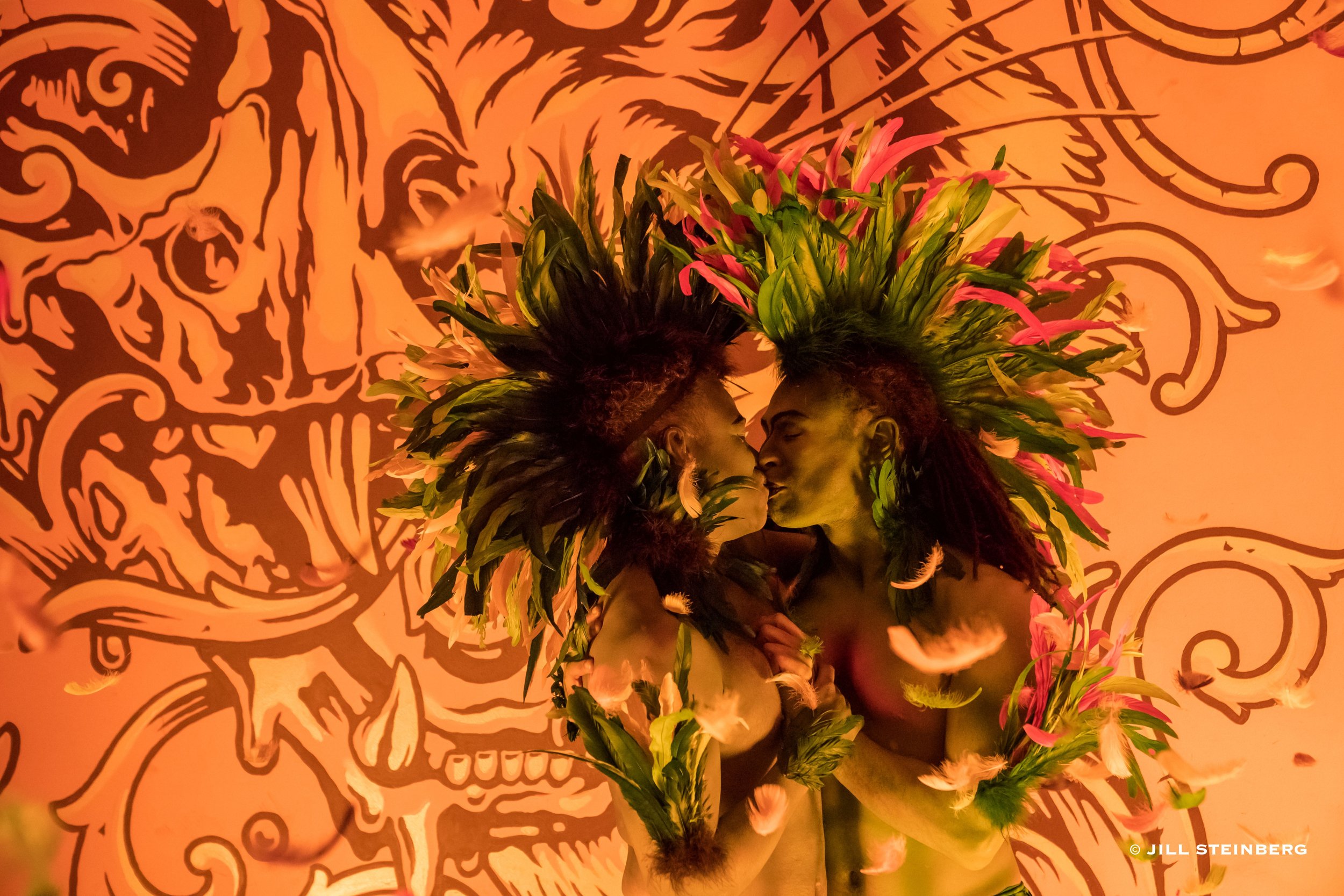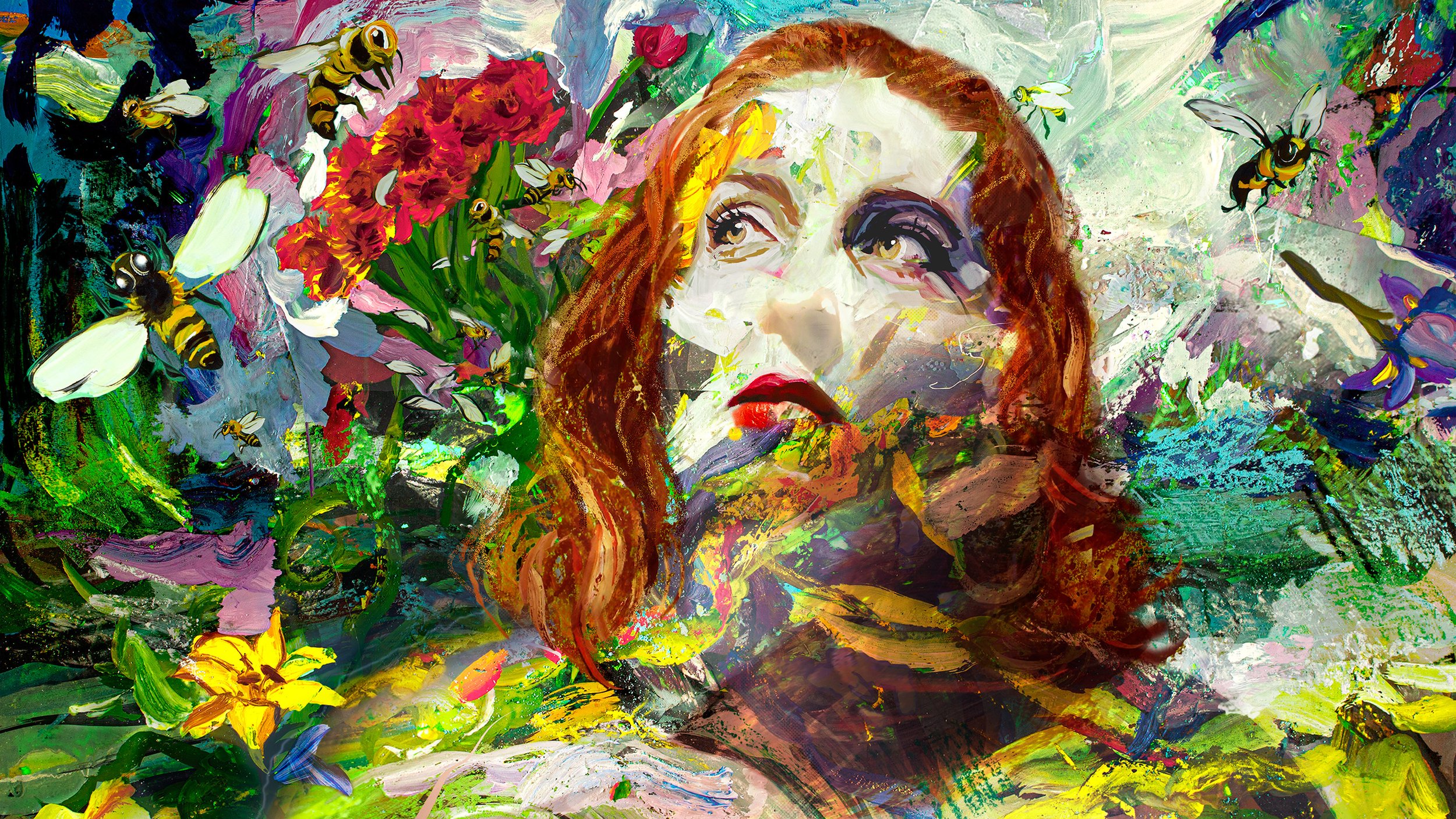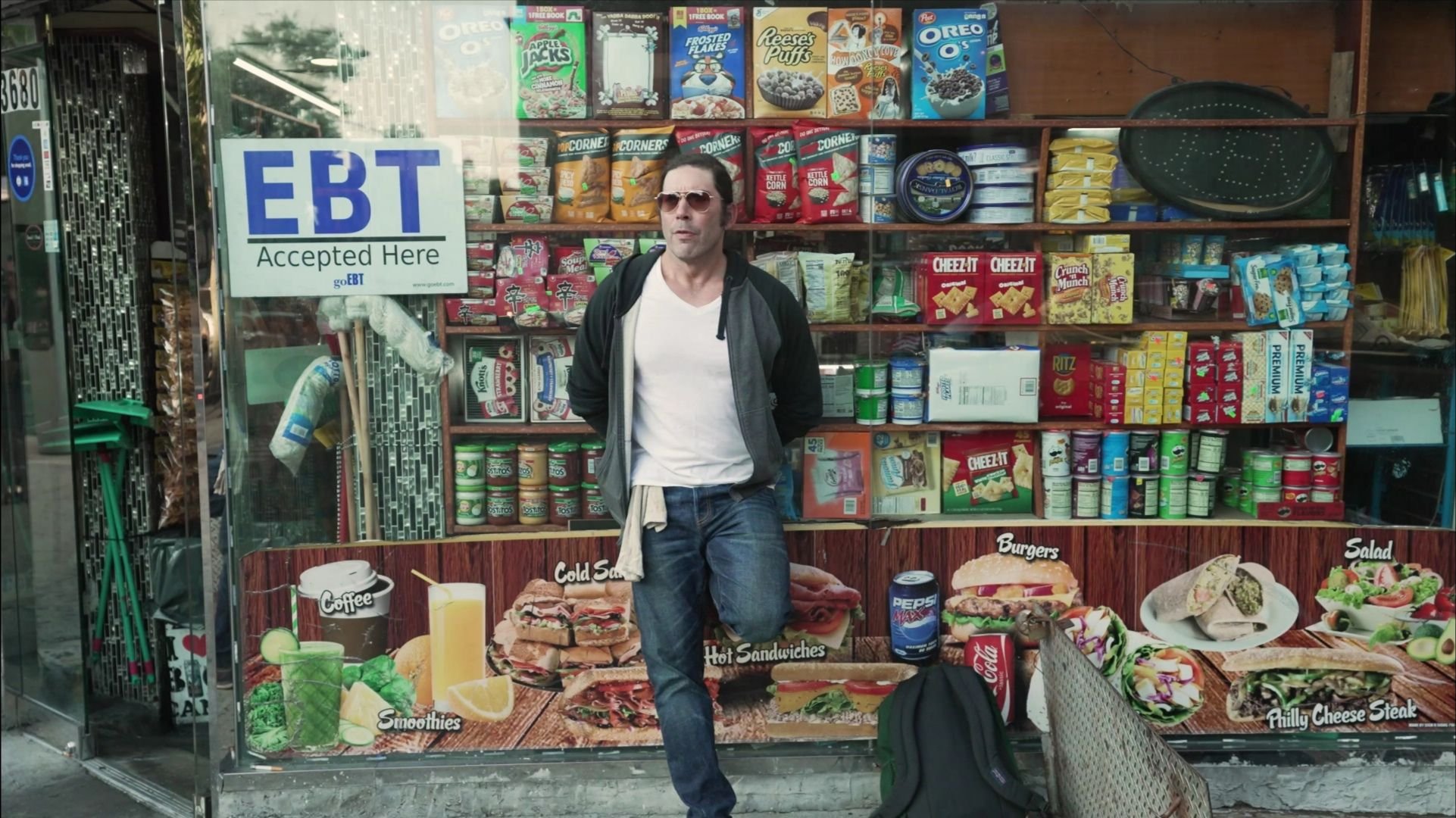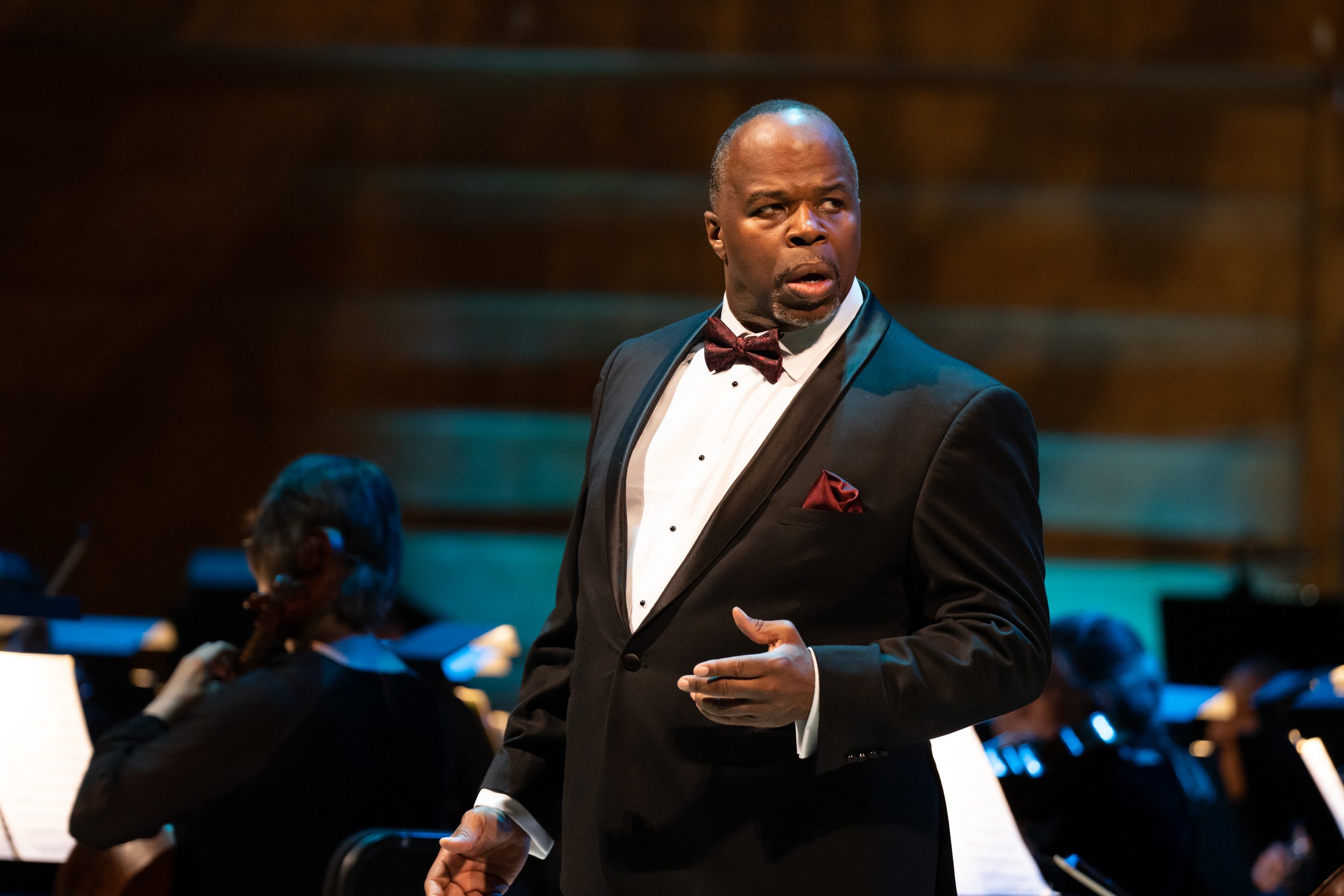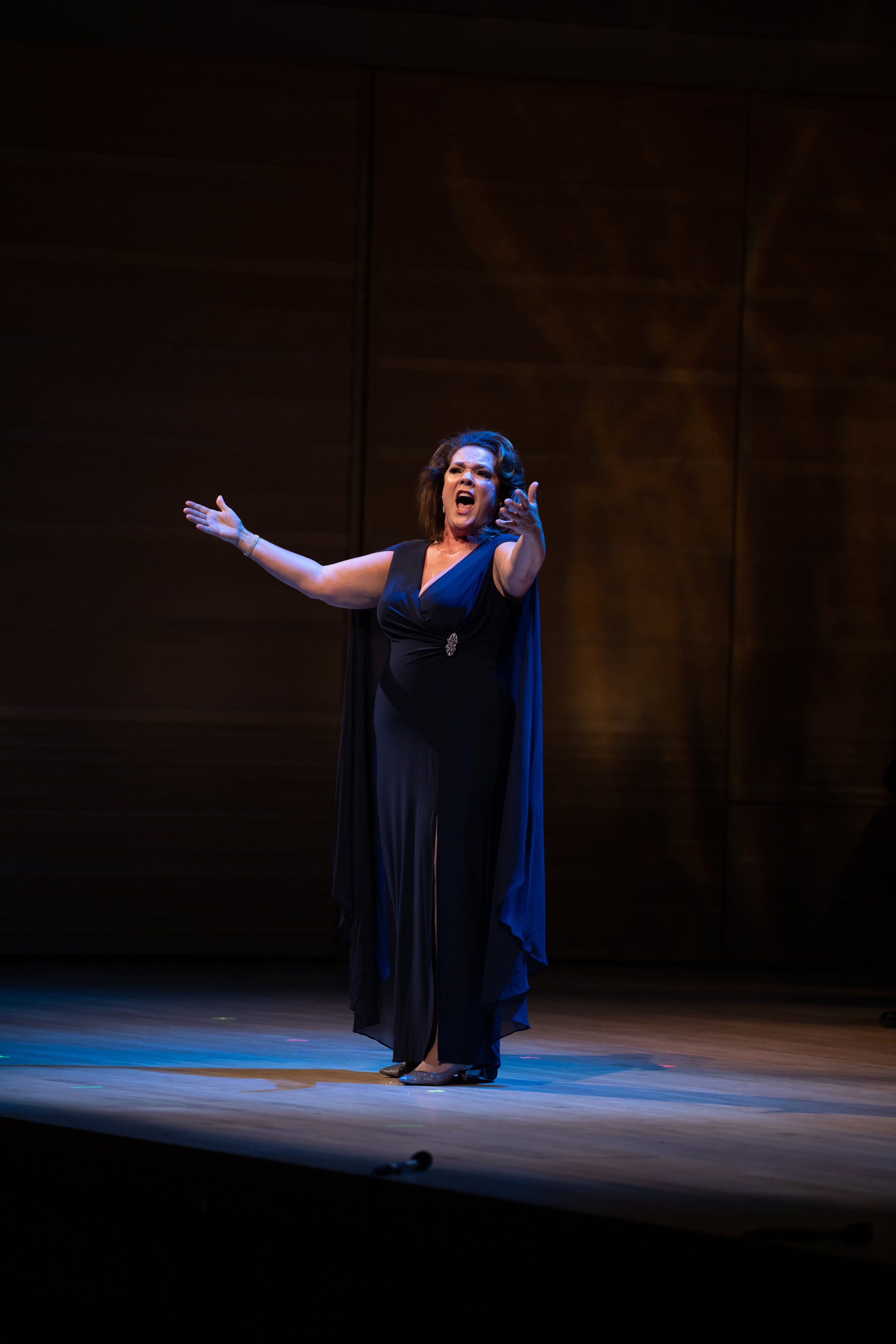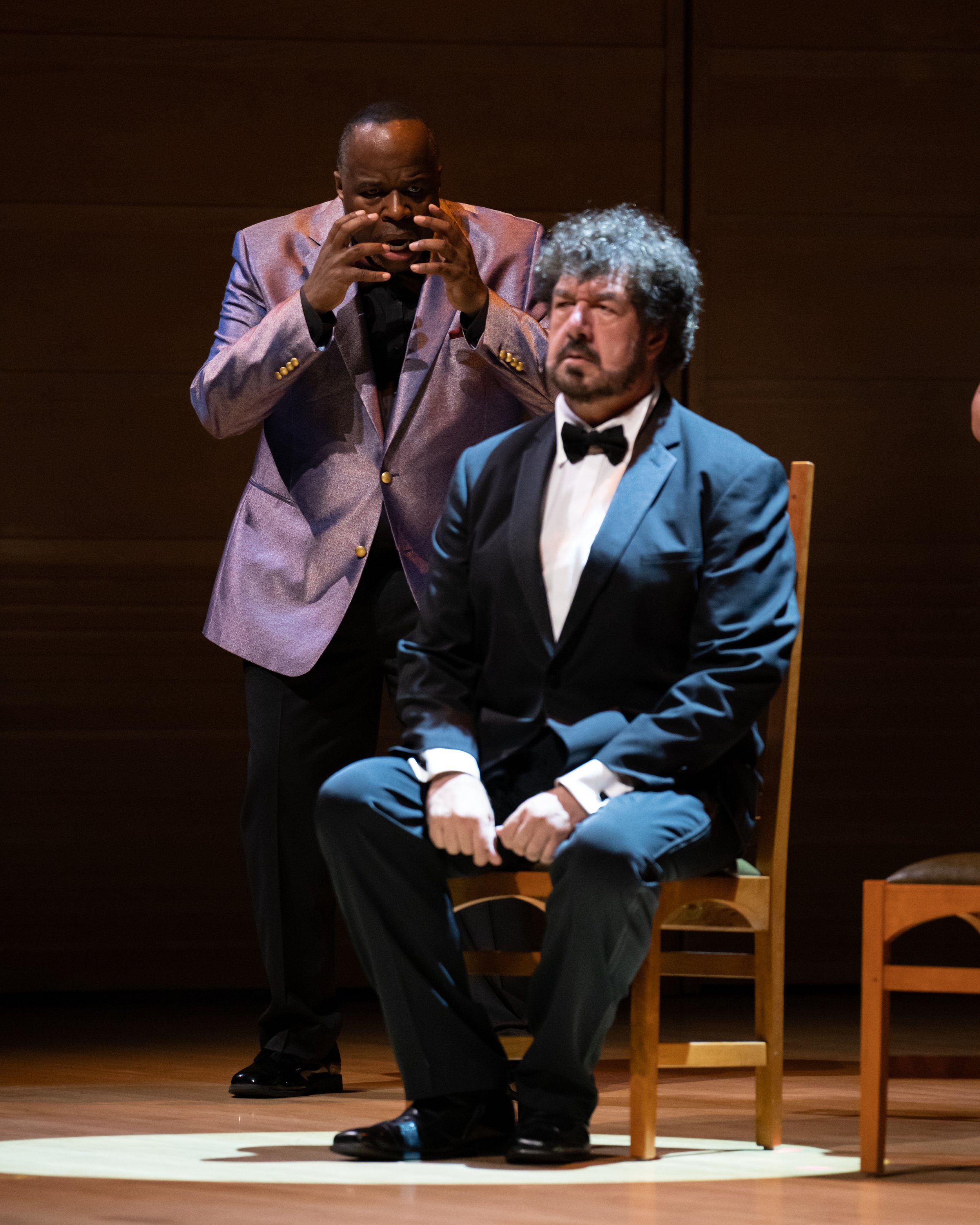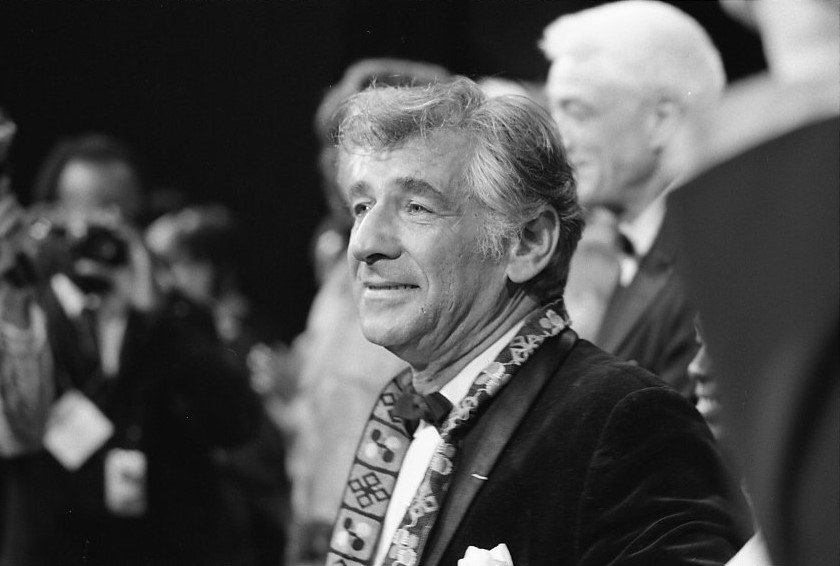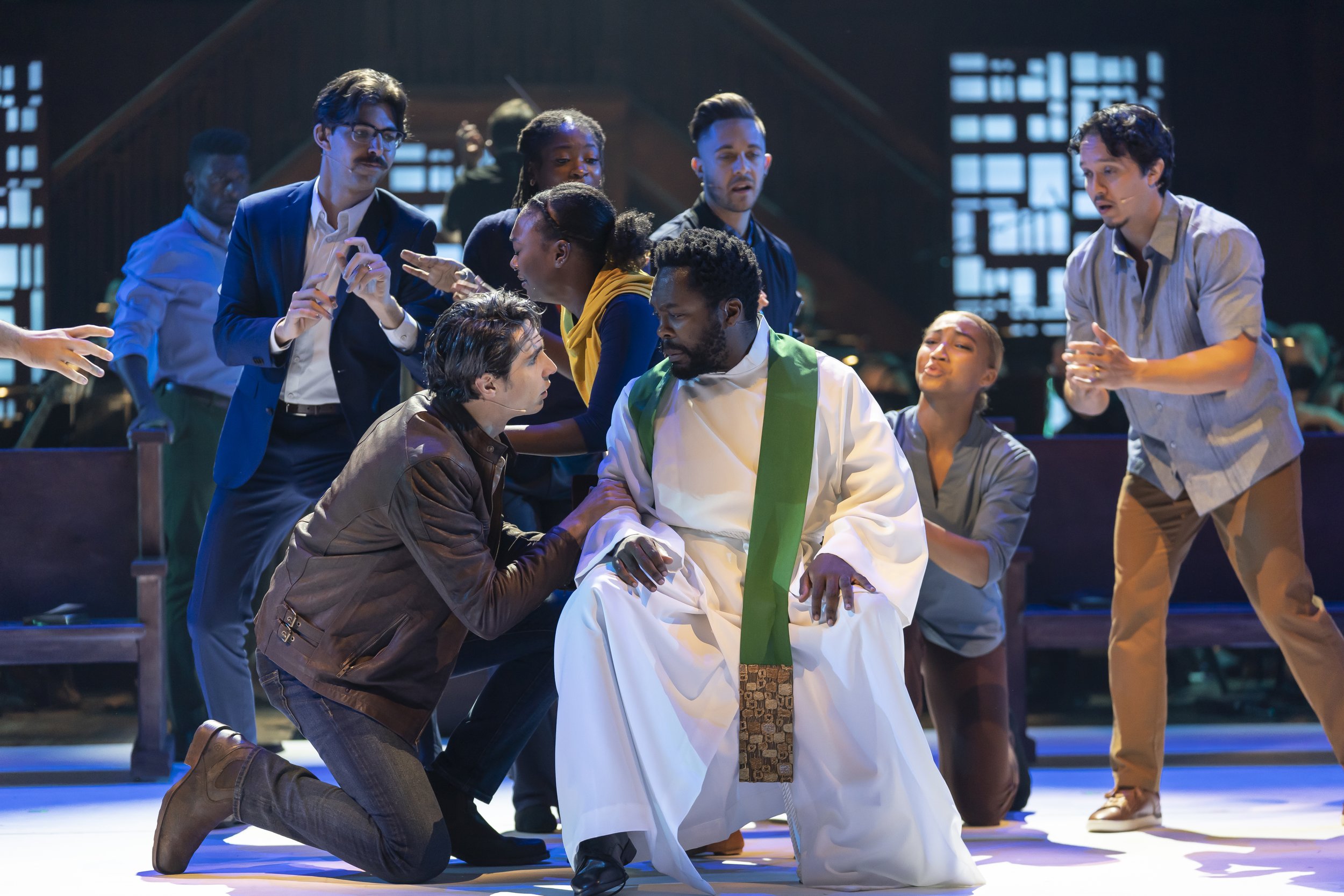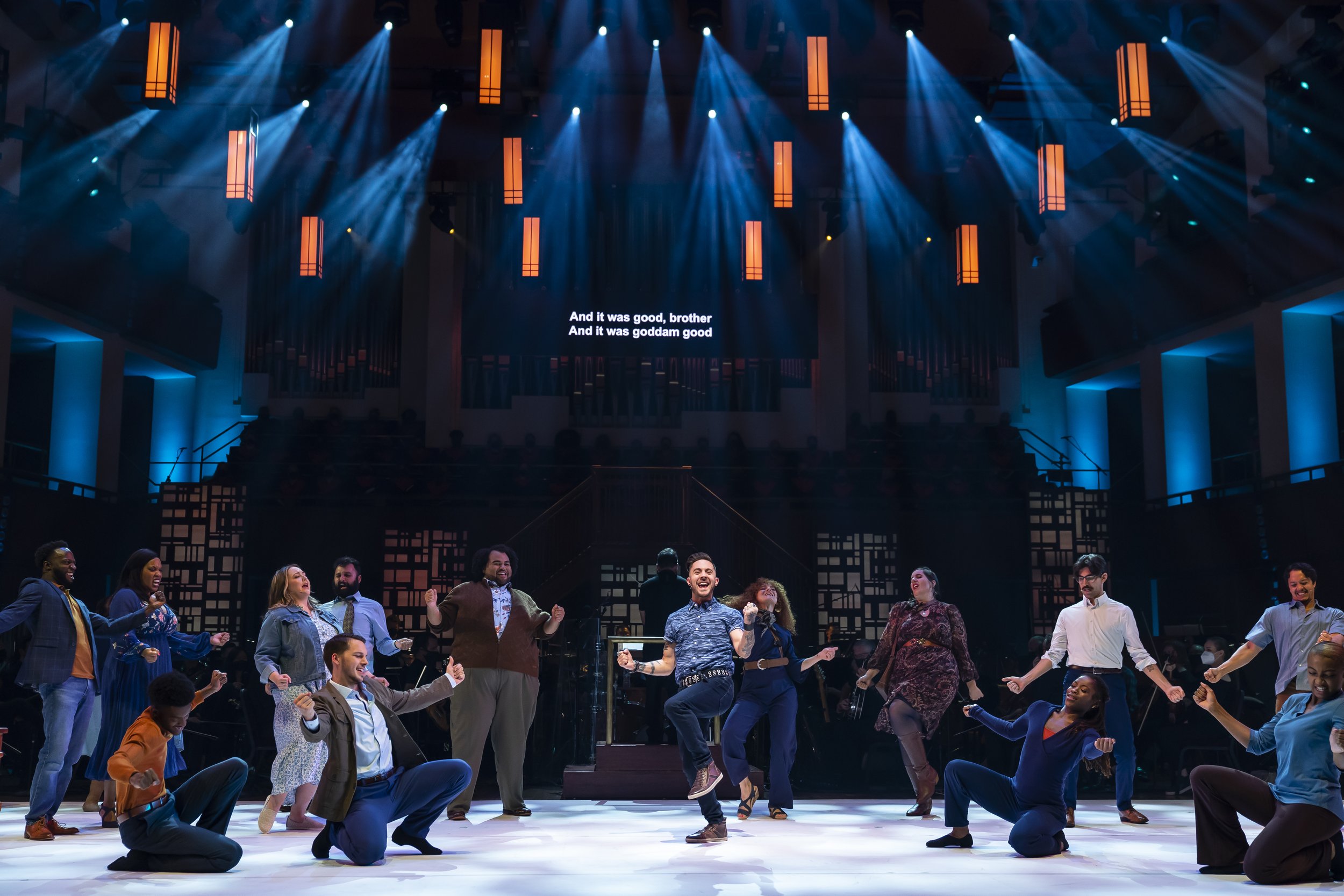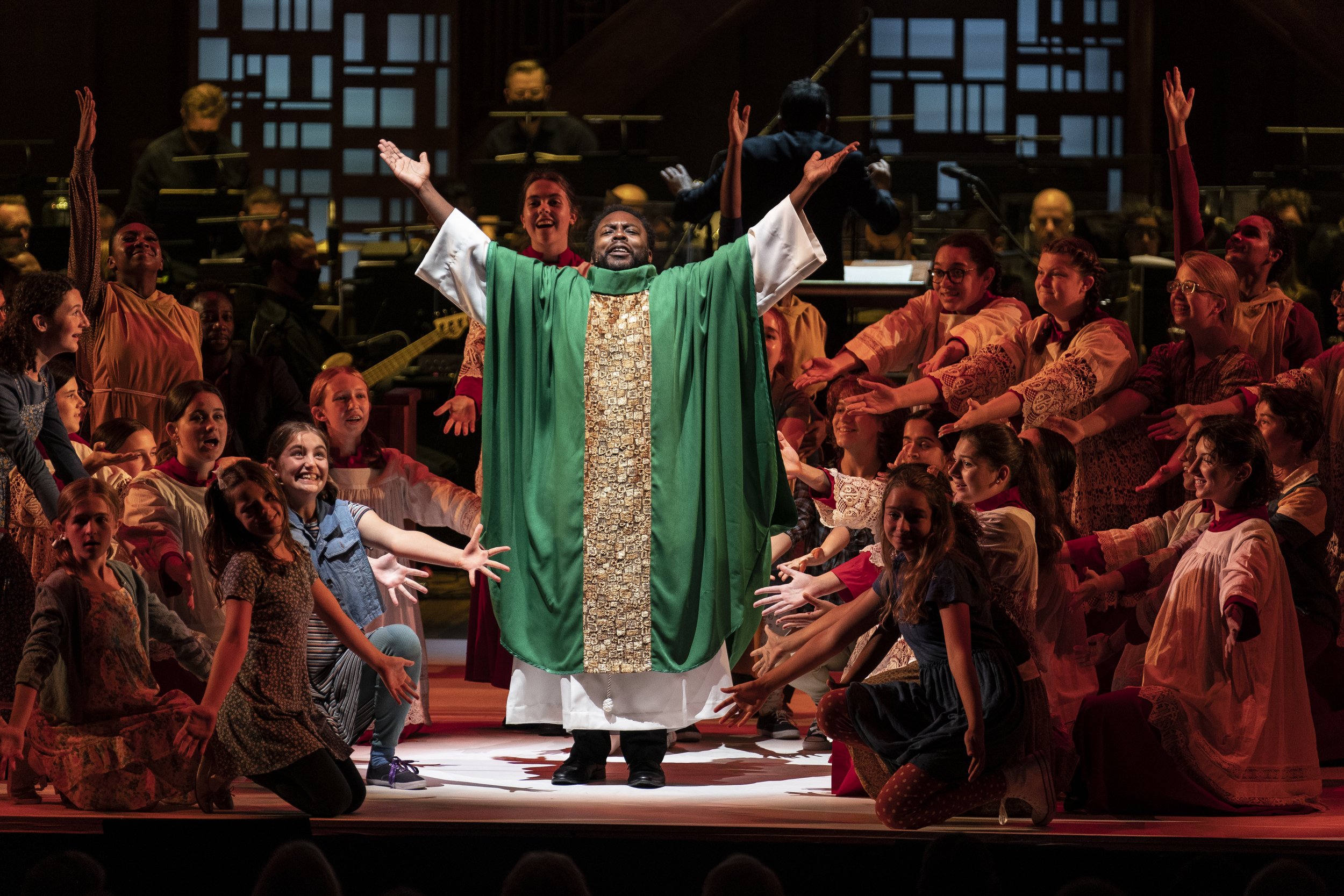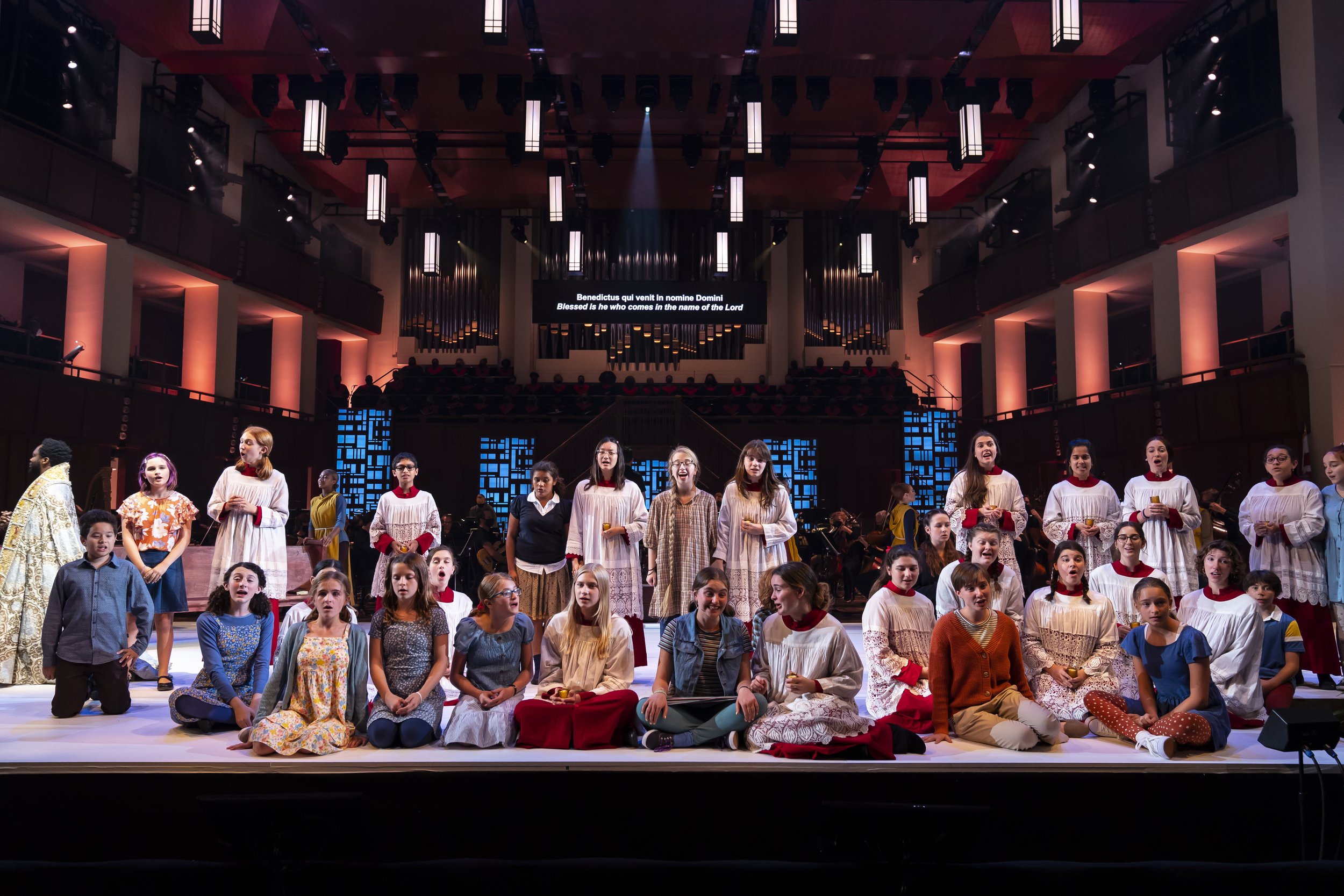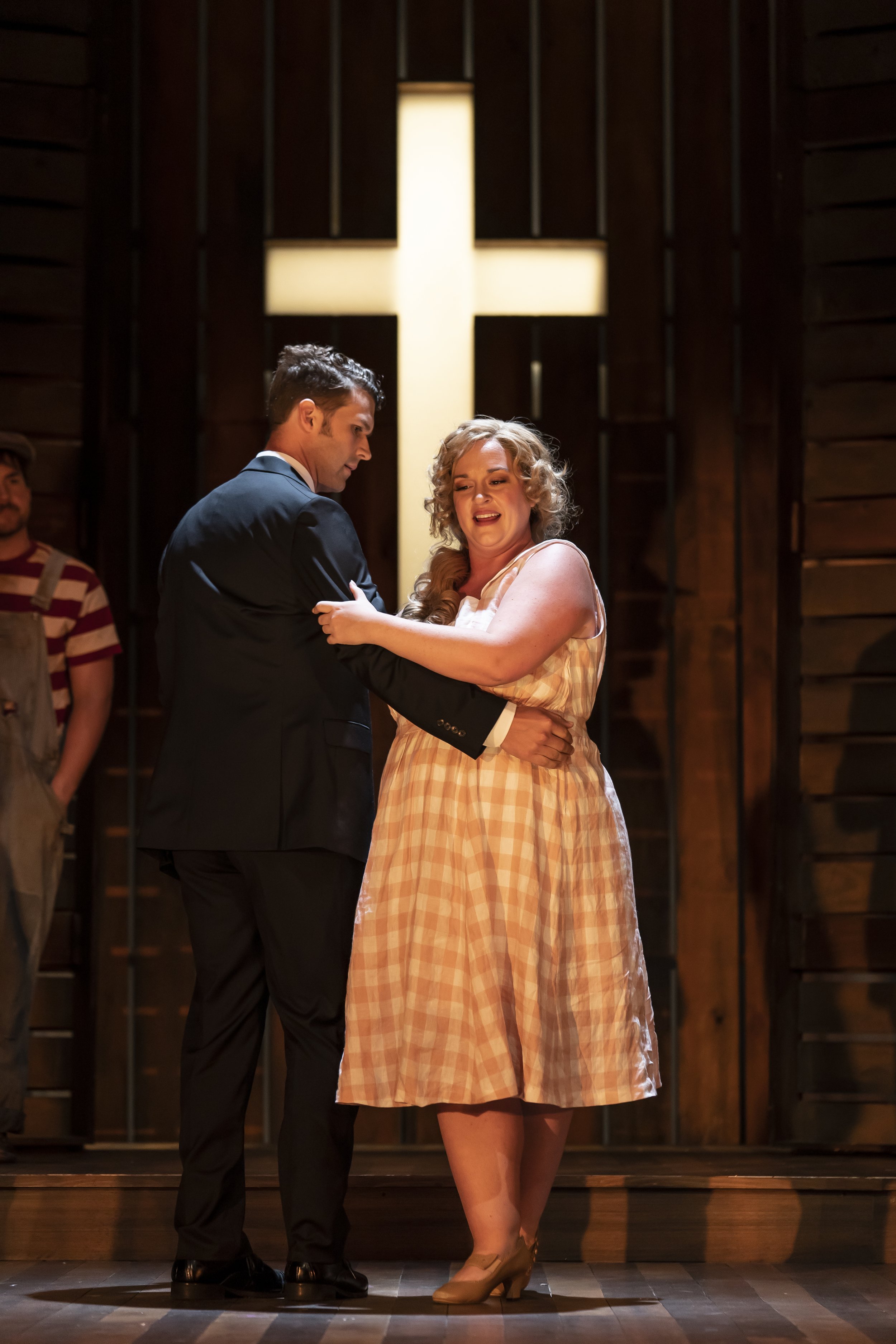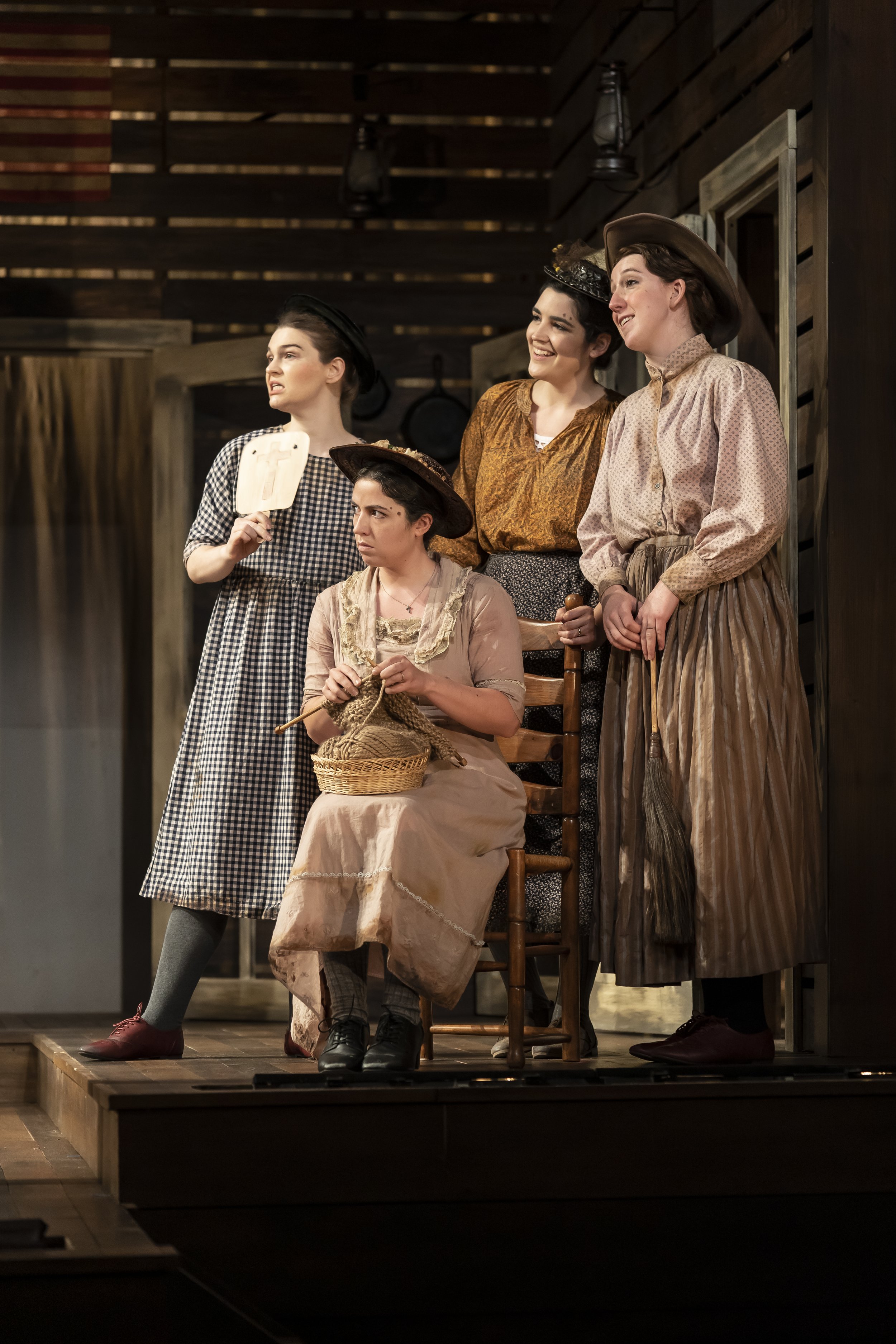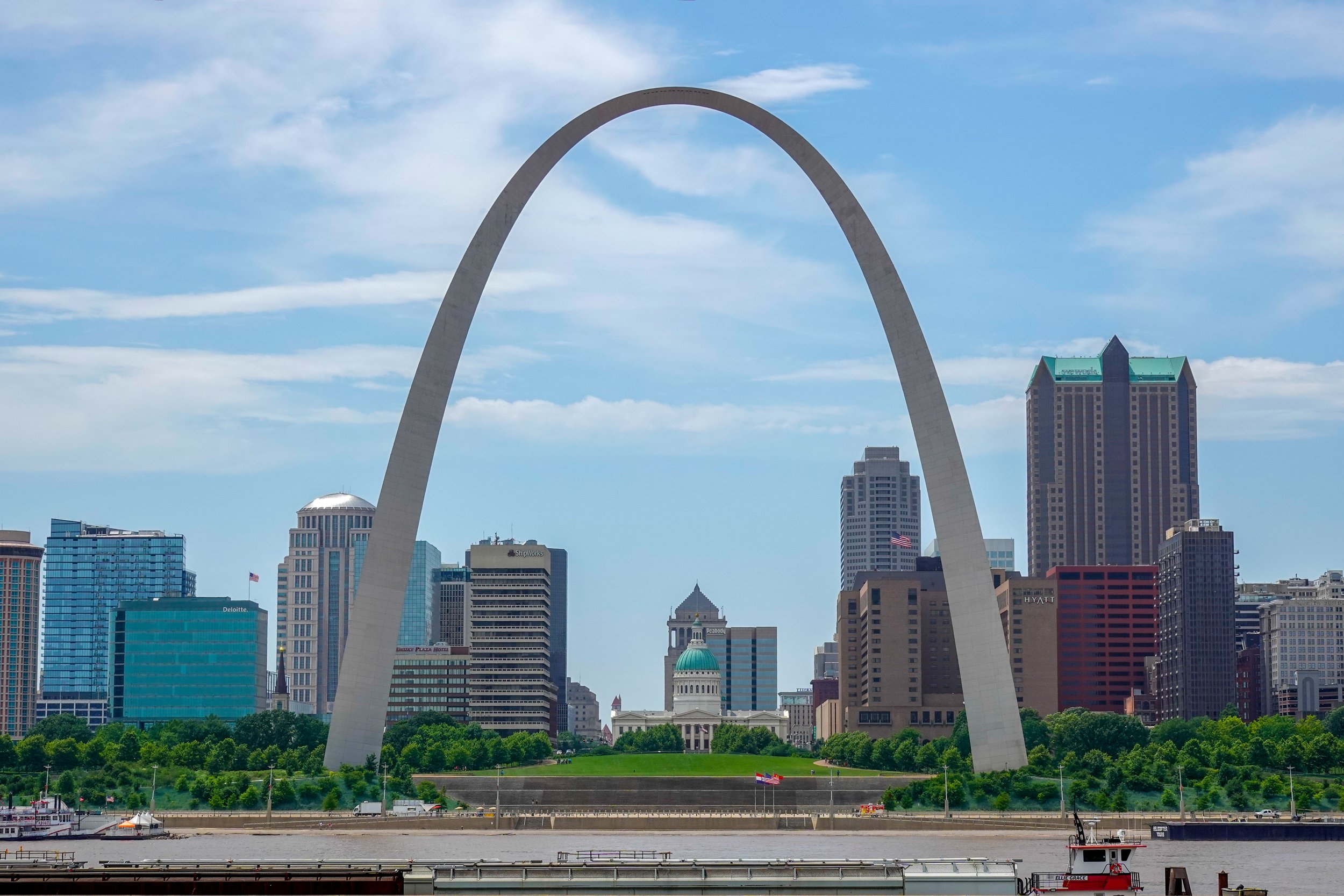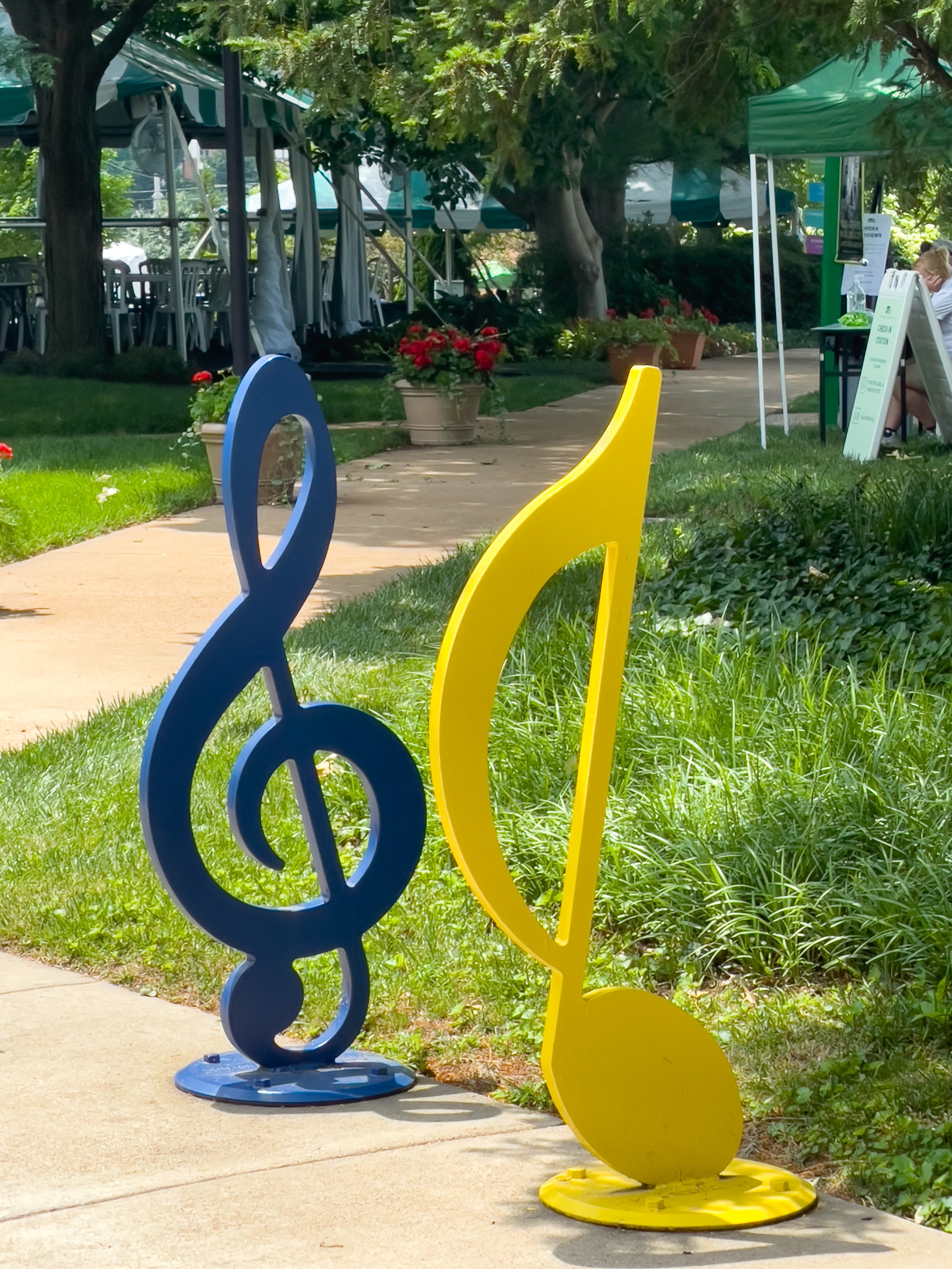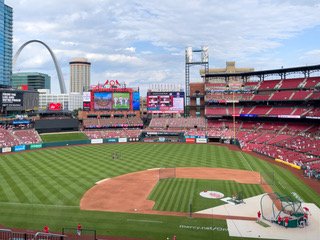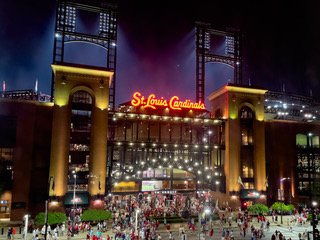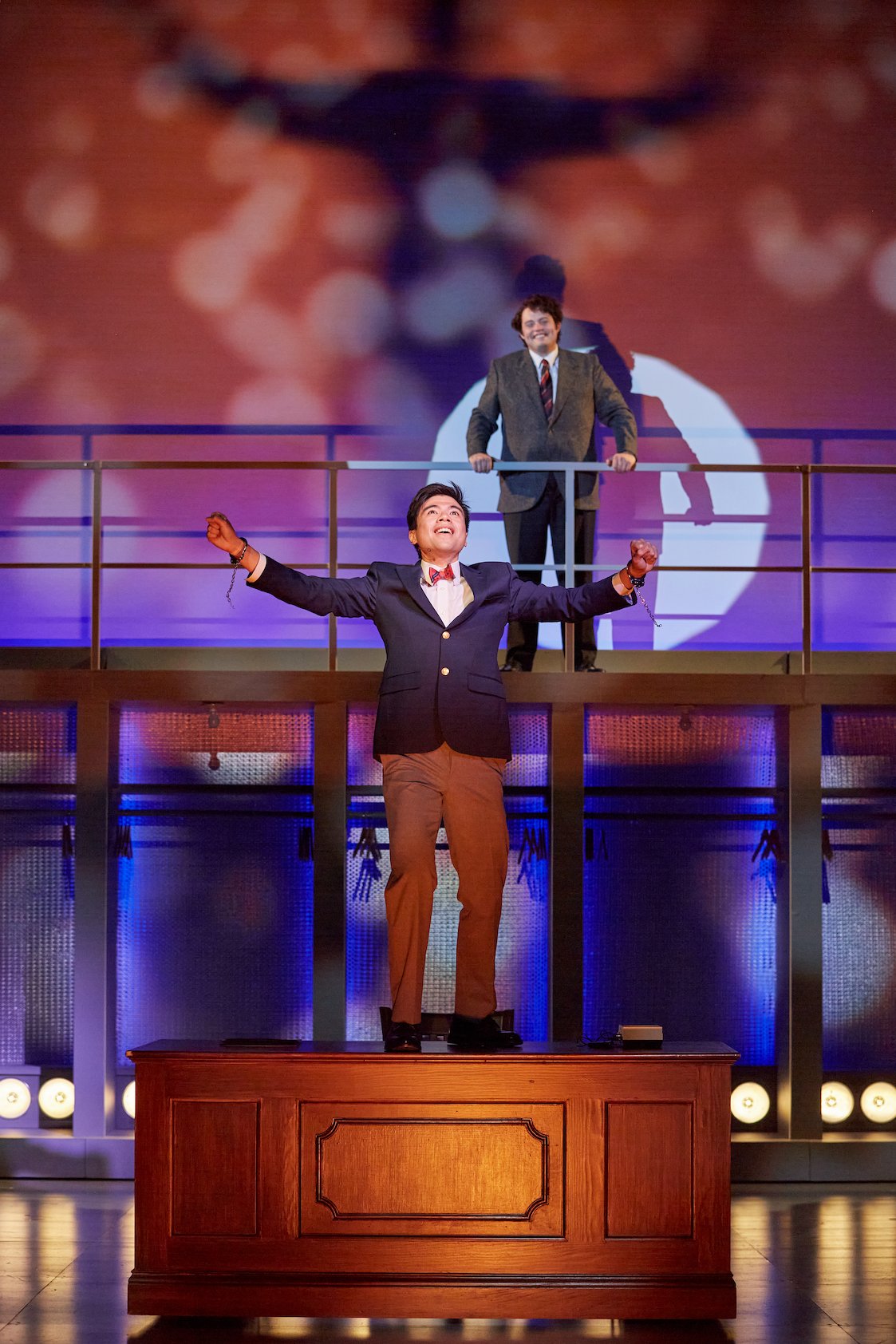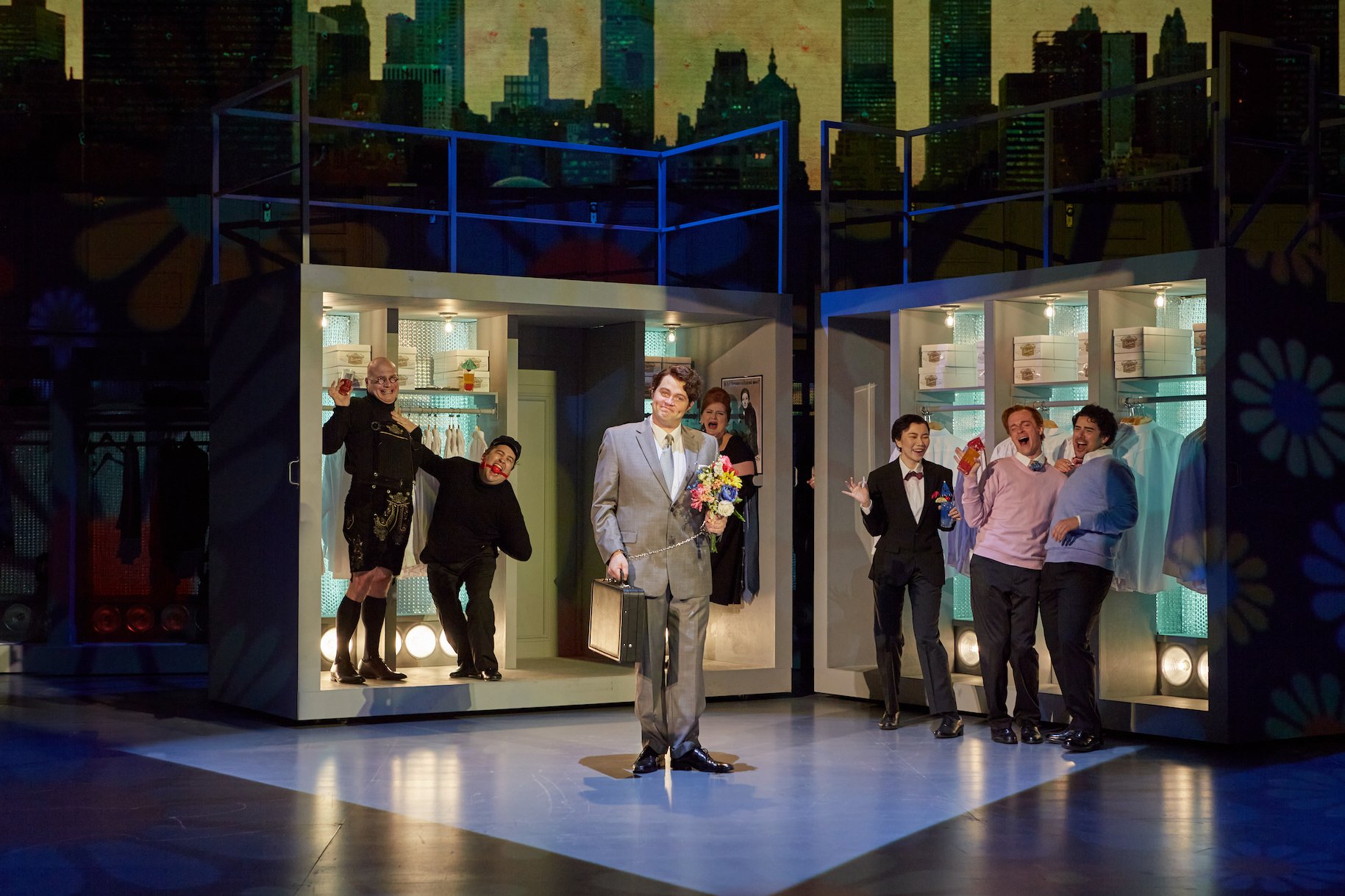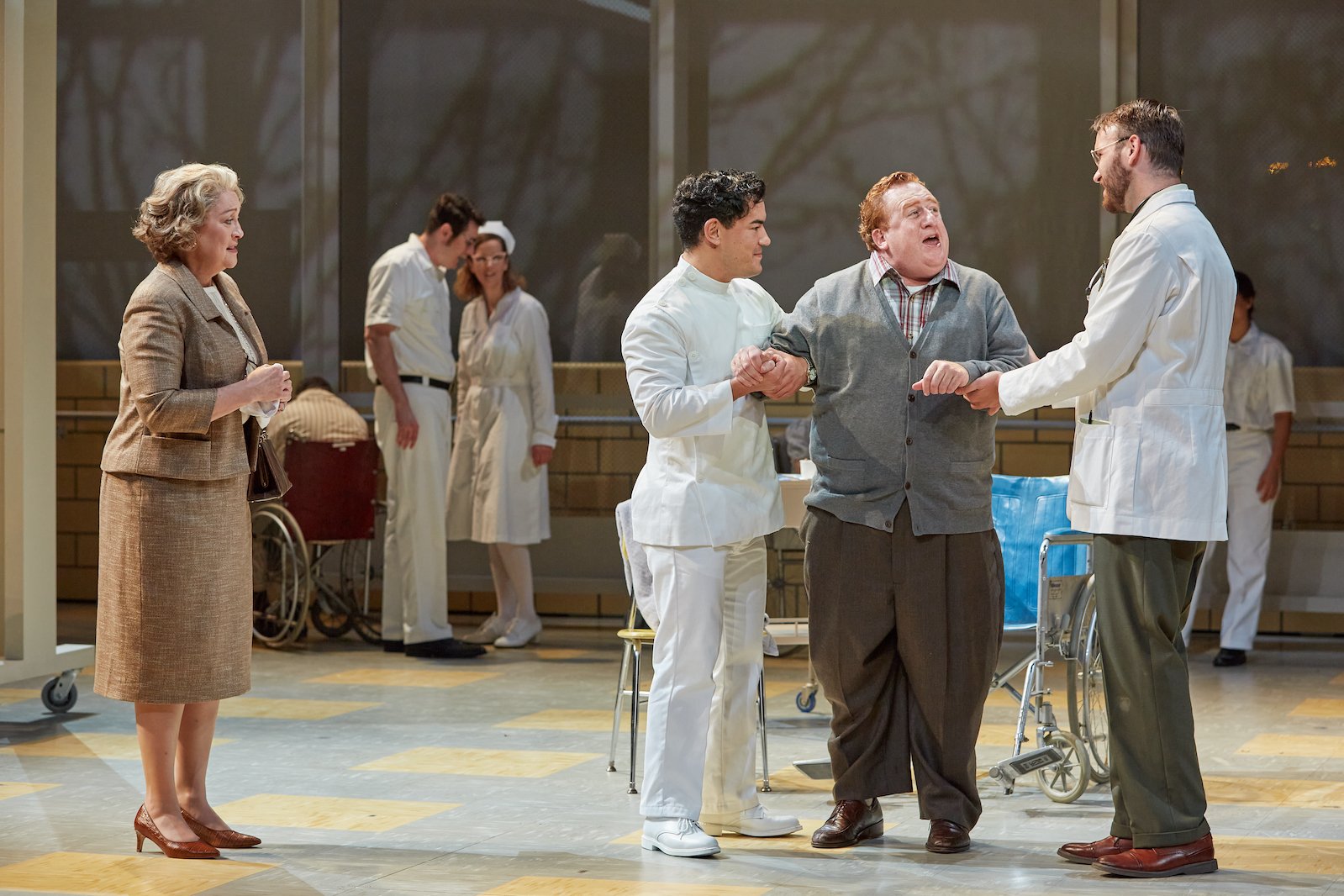I woke up pondering an odd question Monday morning: what if ghosts aren’t real? What are the implications for ghost stories?
Photo of Benjamin Britten in 1968 by Hans Wild. Photo in public domain from Wikipedia. The statue in the background seems relevant to his opera The Turn of the Screw.
I attended Opera Baltimore’s performance Sunday afternoon of Benjamin Britten’s The Turn of the Screw. It is a ghost story based on the eponymous 1898 novella by Henry James. In addition to this opera, the James’ novella spawned a Broadway play (The Innocents), two films (The Innocents and The Turning), and a recent TV series (The Haunting of Bly Manor). Over the years, the interpretation of the story by critics has expanded; some say the story is about real ghosts and some say they were imagined by the governess. This report will take the position that the ghosts in the story were real. After all, I saw and heard them Sunday afternoon in Baltimore.
This was the first production of Opera Baltimore under its new name. Last season, Baltimore Concert Opera produced its first fully staged opera (The Barber of Seville), and with the intent to continue including fully staged productions in its seasonal lineups, the less restrictive name was chosen. OB also launched some new community efforts over the summer; a new civic practice division held a festival in the Old West Baltimore area and continued their free outdoor concert series around the city. Despite the new name, OB’s performance of The Turn of the Screw seemed like old times, a partially staged concert performance in the audacious Engineers Club in the Mt. Vernon area, still one of the best artistic and entertainment values in the mid-Atlantic area.
Colleen Daly as the governess and Norma Shankle in Prologue and as Peter Quint. Photos by Kiirstn Pagan; courtesy of Opera Baltimore.
The storyline for The Turn of the Screw, drawn from the novella by librettist Myfanwy Piper, involves a young governess sent to a country manor to take care of two children, Flora and Miles, whose family has passed; she was hired by their uncle in the city who did not want to take on the responsibility directly, nor to be bothered by reports or requests. The housekeeper, Mrs. Grose, also helps with the children. Soon the governess encounters ghosts of the former governess, Mrs. Jessel, and the former manservant, Peter Quint, who had a sexual relationship at the manor while alive, both of whom died under unusual circumstances. She discovers that these two had unhealthy, perhaps sexual, relationships with the children and now appear to be trying to claim their souls. Only the governess can see the ghosts, and she takes responsibility for fighting the ghosts for the children. I won’t reveal the ending, but I must report that the story is about the power of attraction and lost innocence. Both ghosts quote a line from a poem by Yeats: “The ceremony of innocence is drowned.” One can certainly imagine that the children had been traumatized without ghosts, and author James never revealed whether the ghosts were real or the creation of the governess’s neuroses; reportedly when asked, he replied, “Assume the worst!”. I believe the ghosts were real, assuming the worst.
Robin Steitz as Flora, Annie Chester as Mrs. Grose, and Brynn Blair as Miles. Photo by Kiirstn Pagan; courtesy of Opera Baltimore.
Benjamin Britten wrote fifteen operas in a modern opera style, many with troubling stories such as Peter Grimes, The Rape of Lucretia, and Billy Budd; he has been credited with establishing an English opera genre. My current favorite Britten opera, the charming and delighful A Midsummer Night’s Dream, stands in contradistinction to those. Musicologists hold Britten’s methodical construction of this opera in high esteem, a signature theme for the ghosts is used in the background before being fully exposed when the ghosts make their statements. As a listener, I can only say that the music was engaging and supportive of the story. Including both dissonance and melody, I think of it as beautiful in a sense, but largely unnerving. The different scenes were connected by musical interludes. Britten’s music was critical in the storytelling. Pianist Joy Schreier did her typically excellent job of delivering the accompaniment for OB’s concert productions. Conductor Michael Sakir keep the singers and music flowing together. While I enjoyed the accompaniment by Ms. Schreier, Britten wrote this chamber work for a 13-piece orchestra; of course, coloration provided by other instruments is lost, but it keeps the focus on the singing.
OB’s fine cast of singer/actors did well under Caitrin Davies’ direction, in presenting this drama without costumes or a set and with limited moving about. Soprano Colleen Daly sang well and made for a believable governess. She has performed in several operas with Baltimore Concert Opera previously; I recently saw her impressive performance in Annapolis Opera’s Into the Woods; she is a talented actress in addition to being a talented singer. Tenor Norman Shankle was a stalwart in singing in the prologue and as Peter Quint. Mezzo-soprano Annie Chester was a perfect housekeeper, acting and singing, officious in her duties and protective of the children. In Sunday’s performance, soprano Denique Isaac made a statement in singing the role of Mrs. Jessel as a substitute for soprano Amanda Sheriff. I found her singing to be a highlight of the performance; I hope to see her in future OB productions. The children were also a highlight of the opera and offered some surprises. The role of Flora was sung with emotion by soprano Robin Steitz, who is young but not a child. The role of Miles was sung by seventh grader Brynn Blair in what must be one of the youngest pants roles ever. The purity of her voice and innocence in her singing were perfect, adding an important element to the story.
Colleen Daly as the governess holds a fallen Brynn Blair as Miles. Photo by Kiirstn Pagan; courtesy of Opera Baltimore.
Clearly, something more sinister than just trying to scare us was afoot in this ghost story. What if ghosts aren’t real and yet Mr. James put them in his story as real? Then, maybe the purpose of the portrayal of ghosts as characters in dramas and operas gives us momentary deniability, so we don’t turn away when we encounter the dark part of human nature reflected in the ghosts; we see ghosts, not people, rob children of their innocence. But its troubling even when ghosts do it, very troubling indeed if ghosts aren’t real. Art causes us to confront the good and the bad in human character. Tough love.
I have to admire Opera Baltimore’s artistic standards. For their first opera under the new name, I might have expected them to offer up something pleasant and ingratiating, like Mozart’s Marriage of Figaro or Puccini’s La Bohème. But no, they went with a modern opera first performed in 1954 built on a 12-note scale (a little dissonance there) and based on one of the most troubling ghost stories of all time. I jest, but Artistic and General Director Julia Cooke is committed to bringing OB’s audiences a variety of opera genres. In closing her opening remarks addressing the audience, she wanted to say to enjoy the performance but had to admit that for this opera “enjoy” might not be the right word. I agree, but it was a very worthwhile artistic and human experience; it was real.
And it introduced me to an important work I might have missed, and it has whetted my appetite for seeing the fully staged version. Thank you once more, Opera Baltimore.
The Fan Attraction: The two performances of The Turn of the Screw were given on Friday night and the following Sunday afternoon, in the Engineers Club as is the usual practice of OB. The Engineers Club in the Garrett-Jacobs Mansion is a palatial, intimate venue for concert opera, well worth a visit on its own. There was no current COVID requirements for this production. I typically utilize on street parking close to the Engineers Club for performances, but valet parking is available. The current venue for OB’s fully staged operas is Stephen’s Hall at Towson University. Ticket prices for OB performances remain a bargain, and be forewarned, performances are typically selling out in the small 200-seat theater of the Engineers Club. Last year’s fully staged The Barber of Seville was also a sellout; best to get your tickets early for March 23 and 24 when OB presents Verdi’s La Traviata.
Dr. Aaron Ziegel, OB’s Scholar-in-Residence provides a pre-opera talk one hour before each performance. He also provides four one-hour, highly informative Zoom classes for ticket holders on each upcoming opera. These lectures are maintained and available online to all at this link.
For this production, Opera Baltimore offered ticket holders a limited tour of the Garrett-Jacobs Mansion prior to the performance. Apparently, the guide for the tour when I was there was unavailable, so Artistic and General Director Joyce Cook led the tour. Of course she did, and now you know one of the main reasons why Opera Baltimore is such a success.



